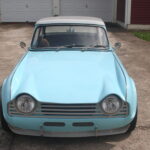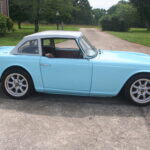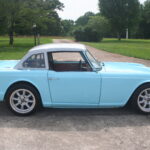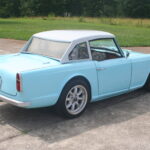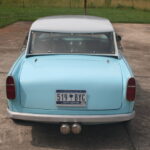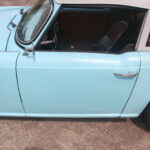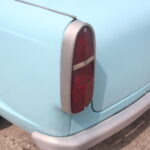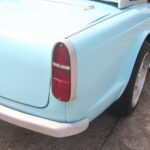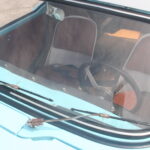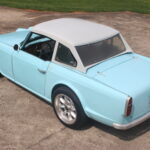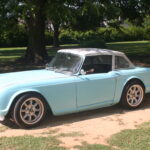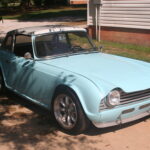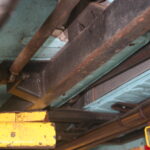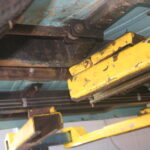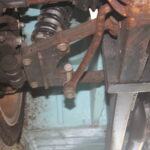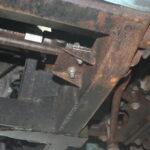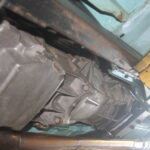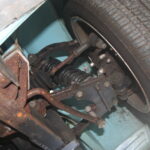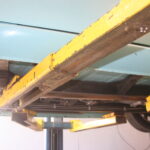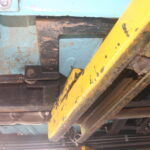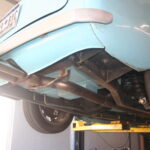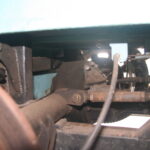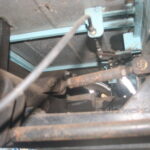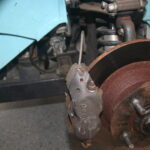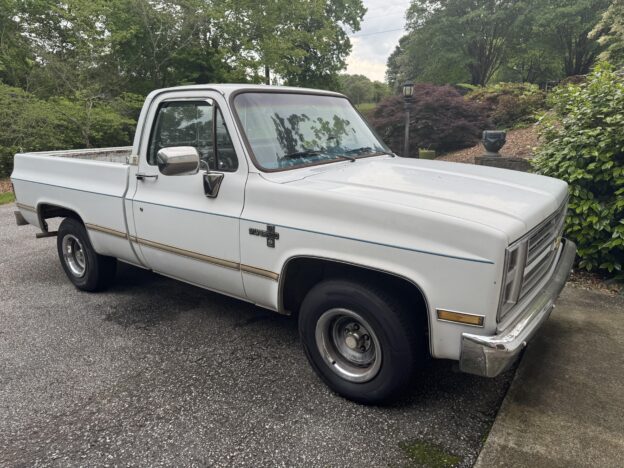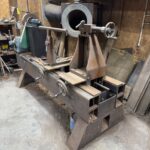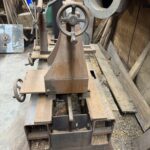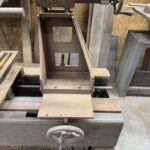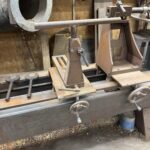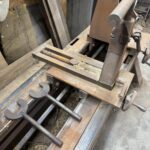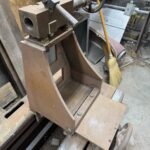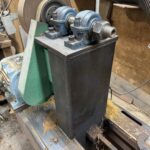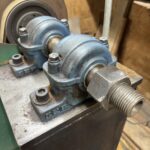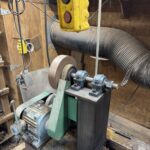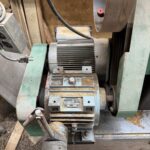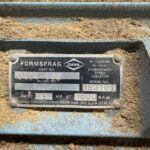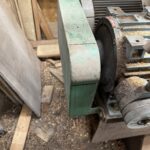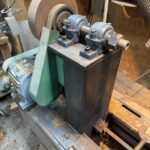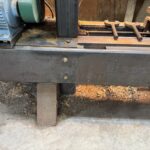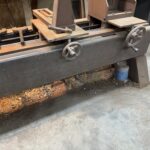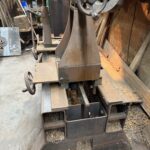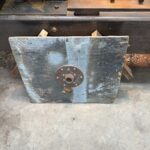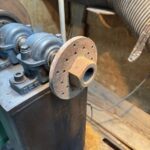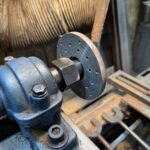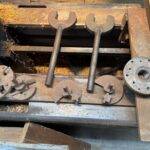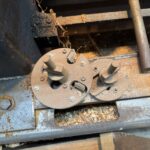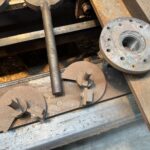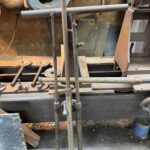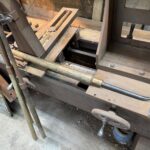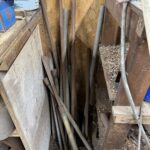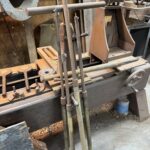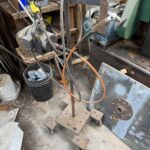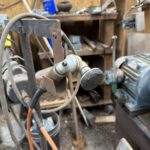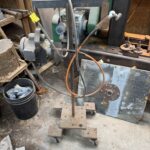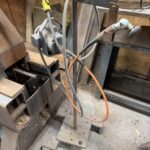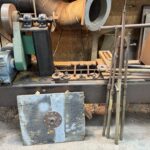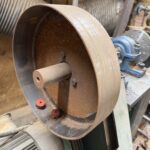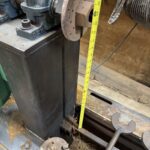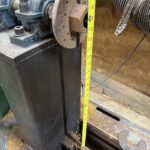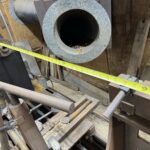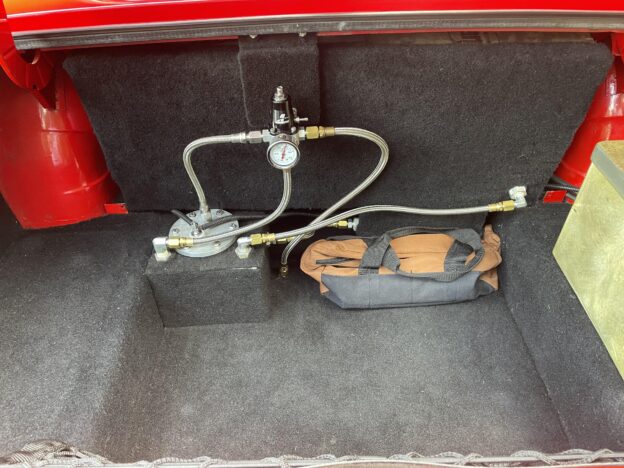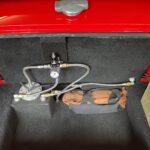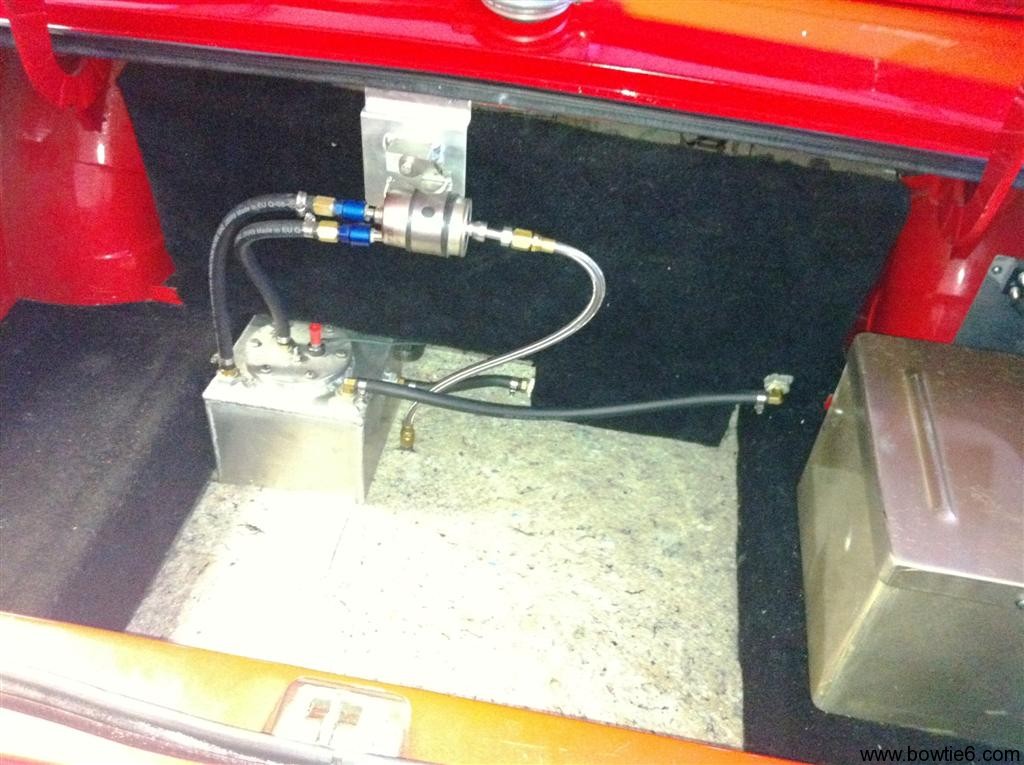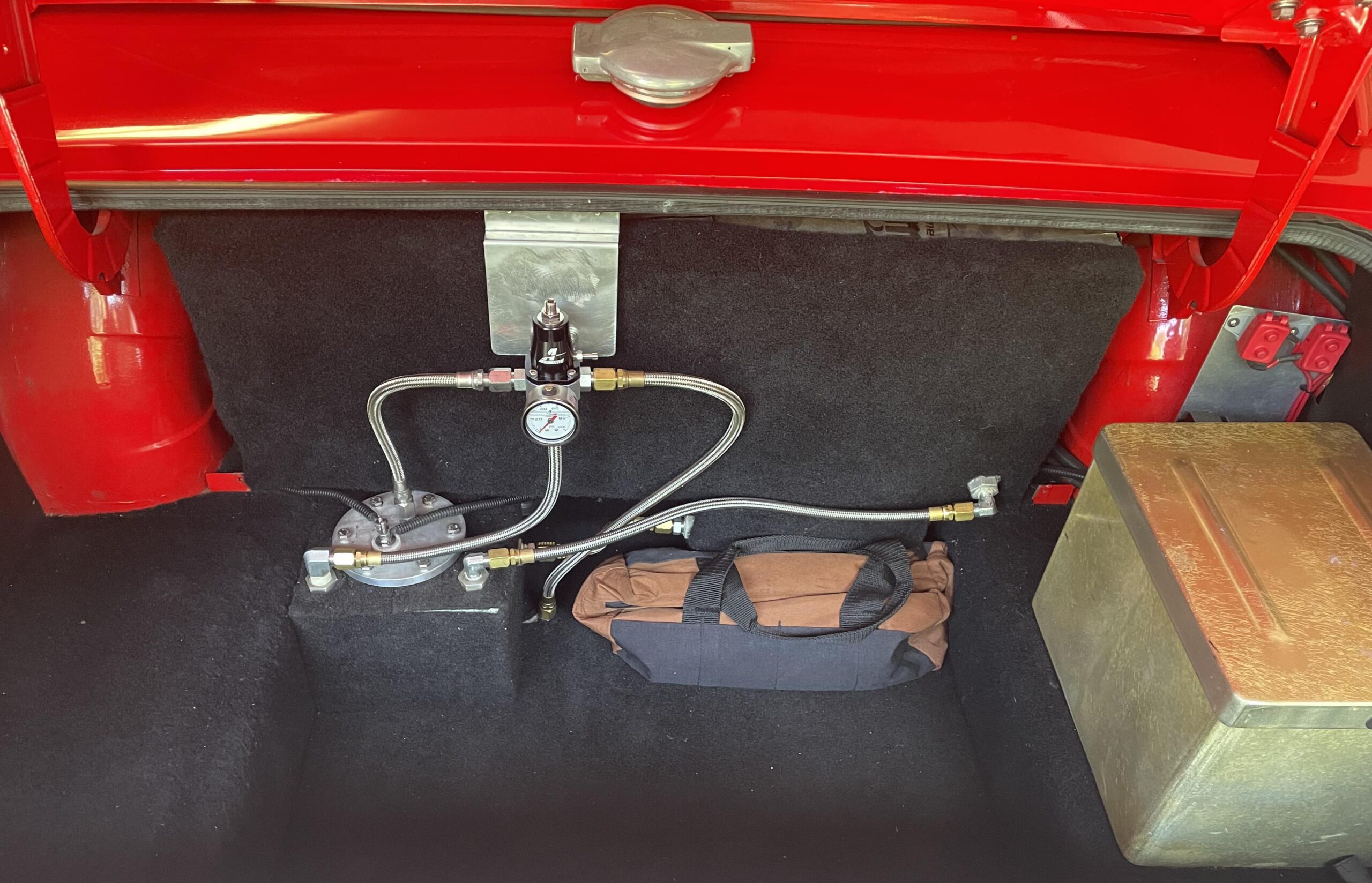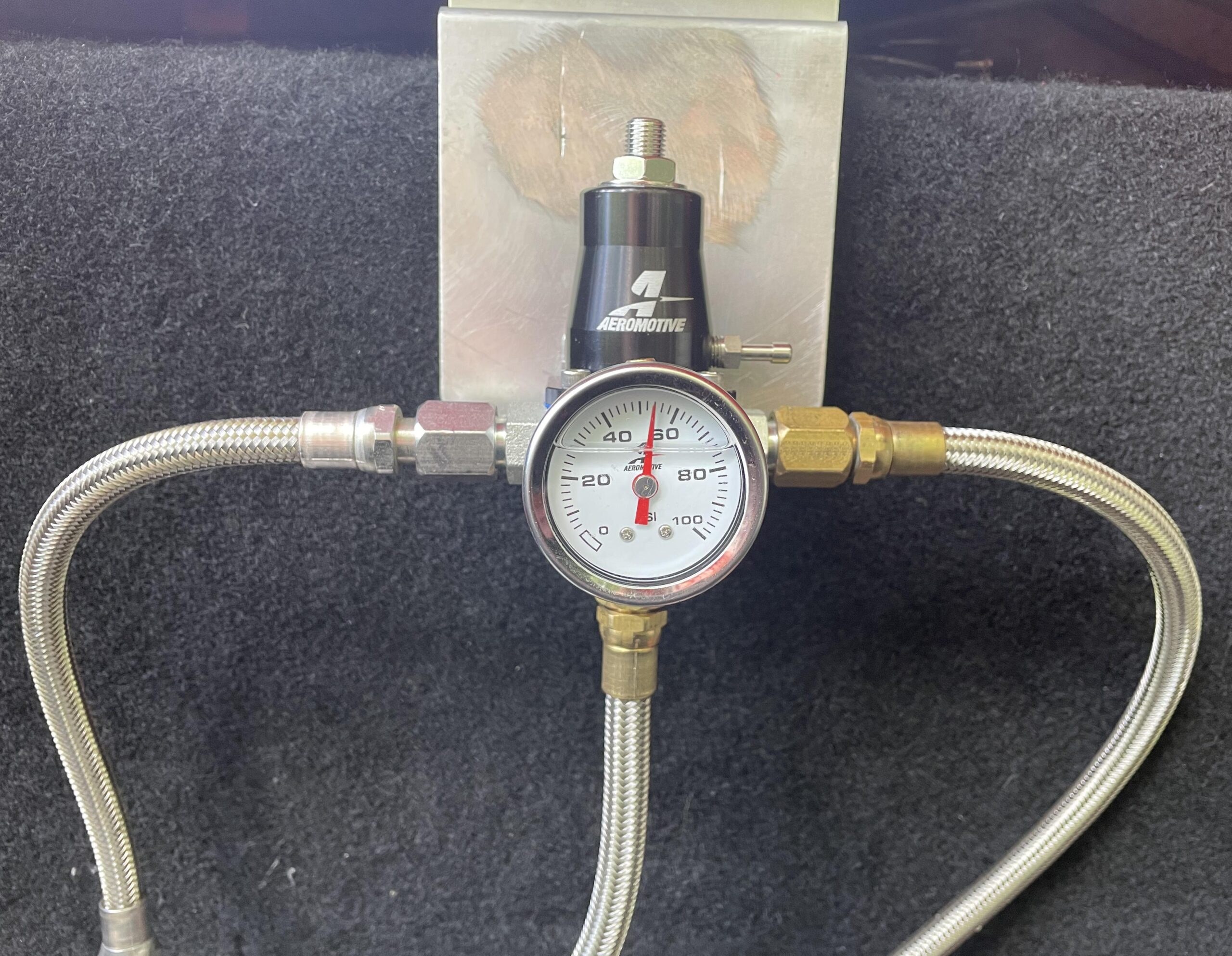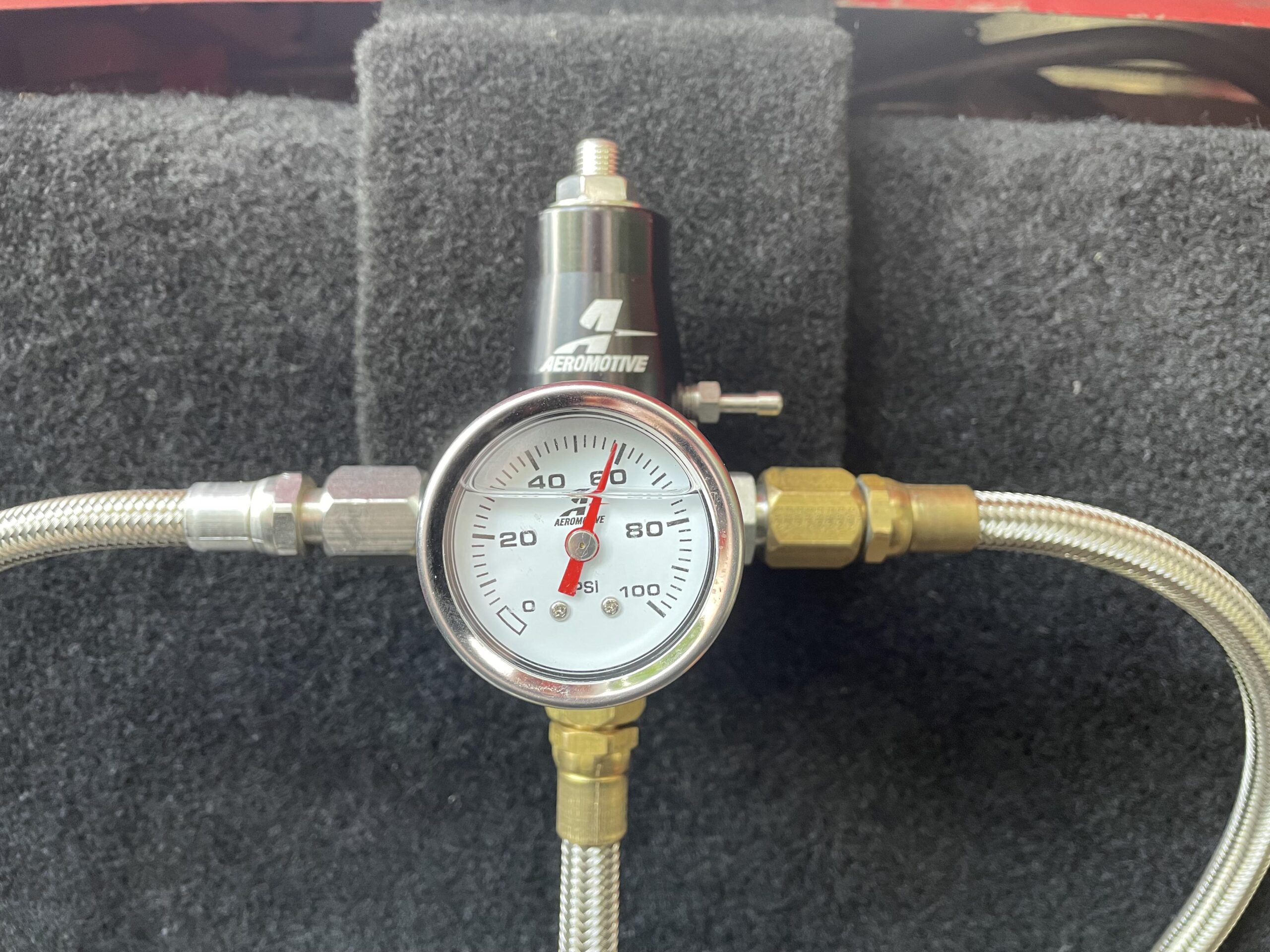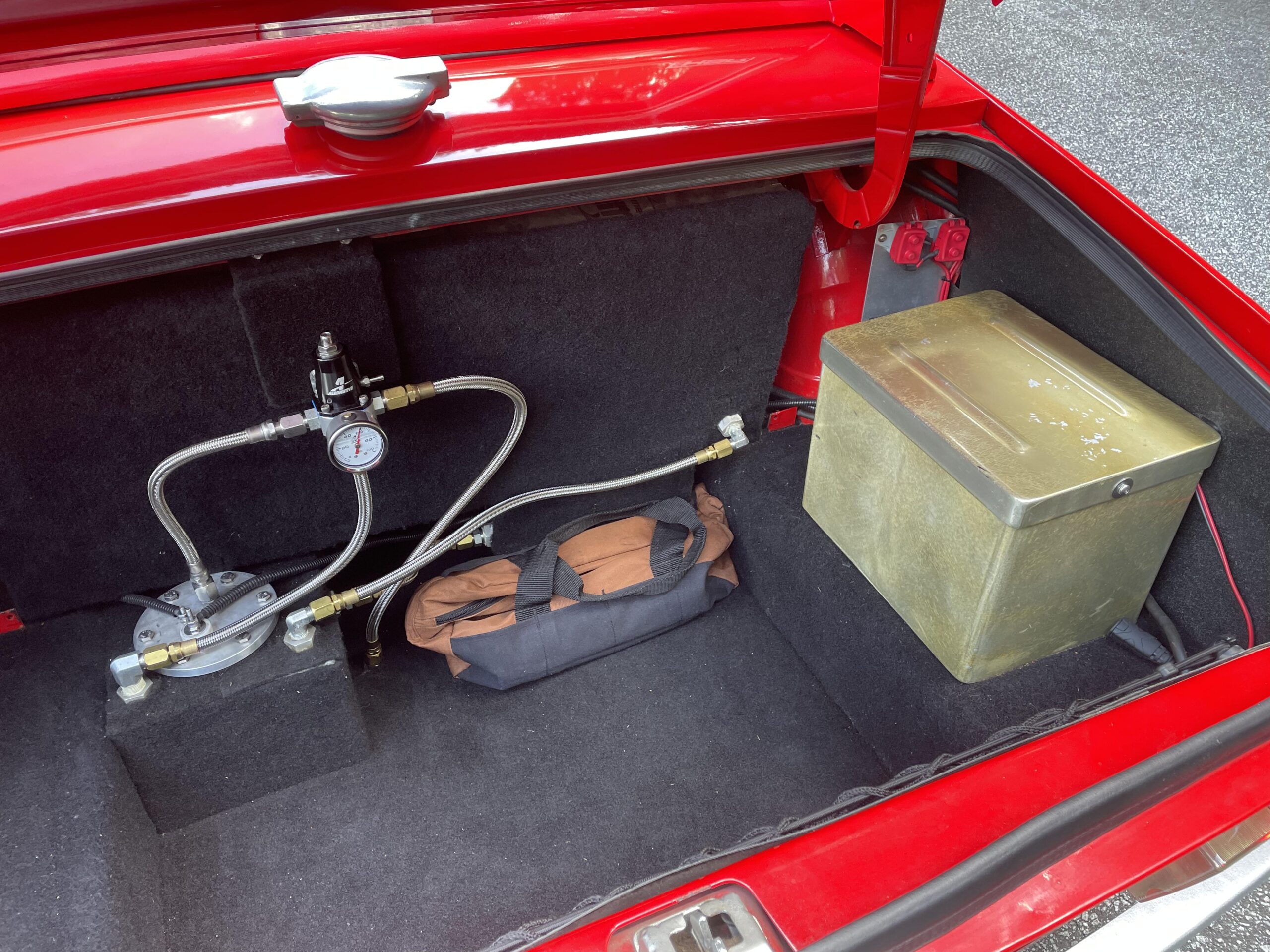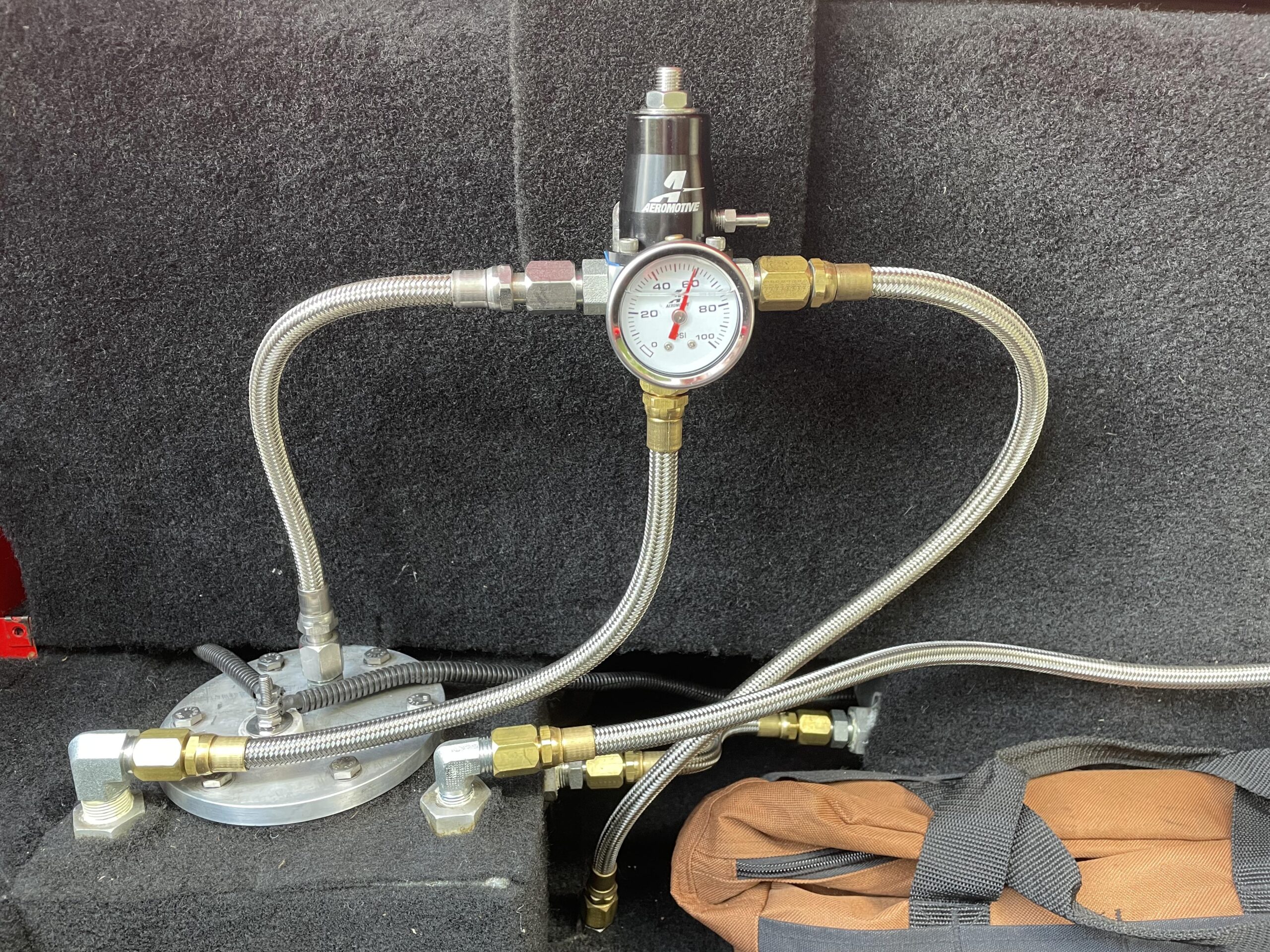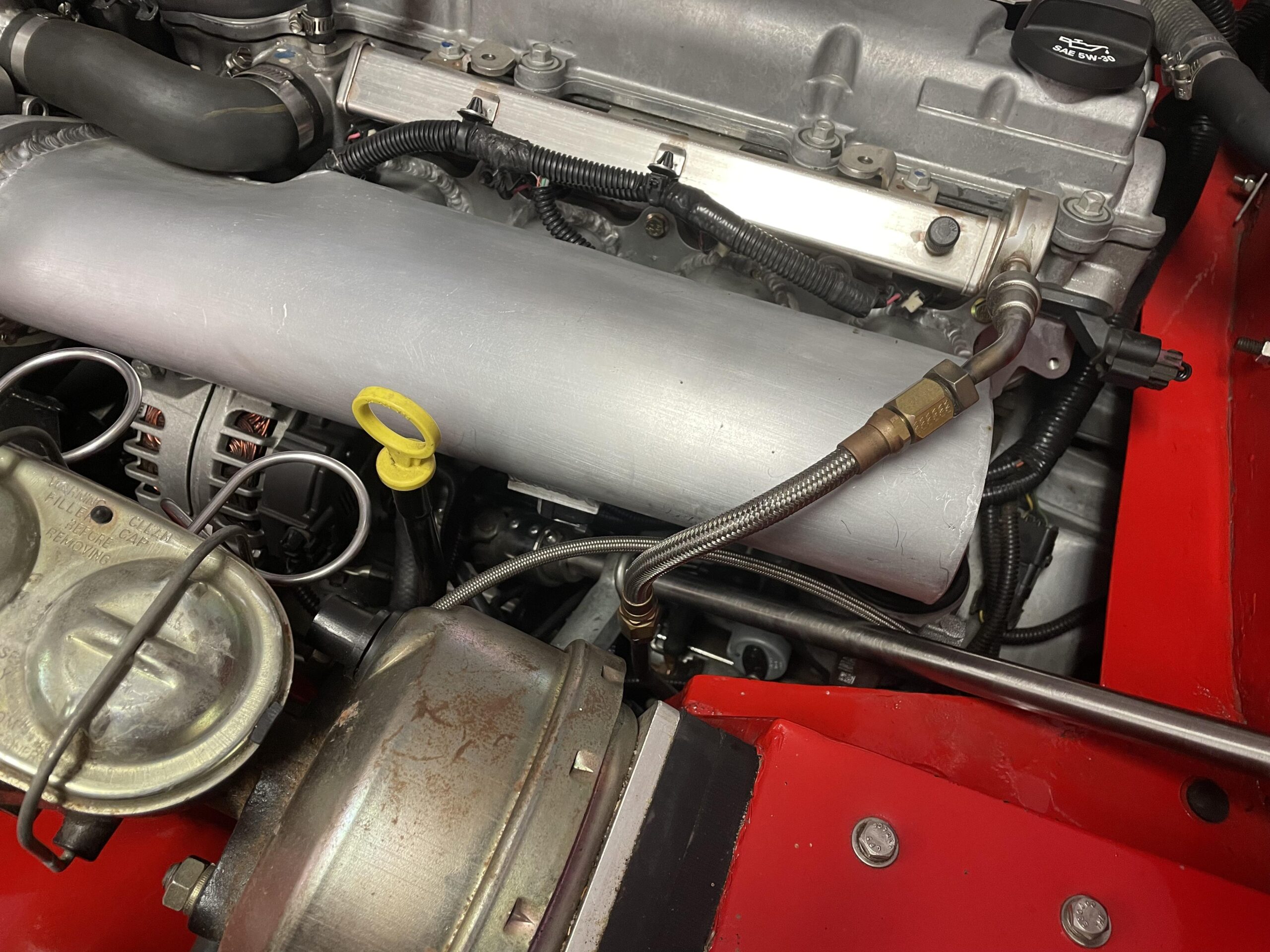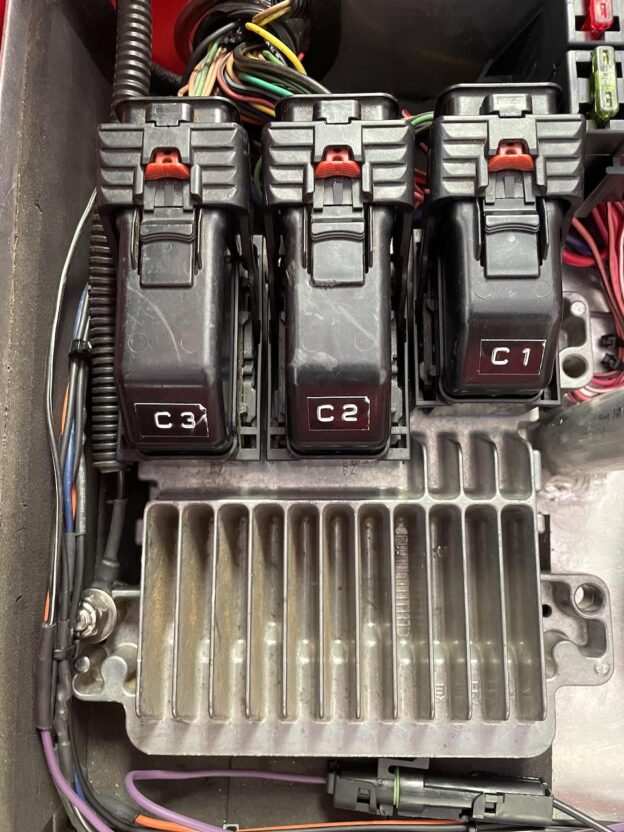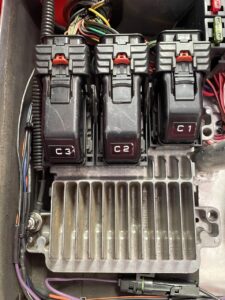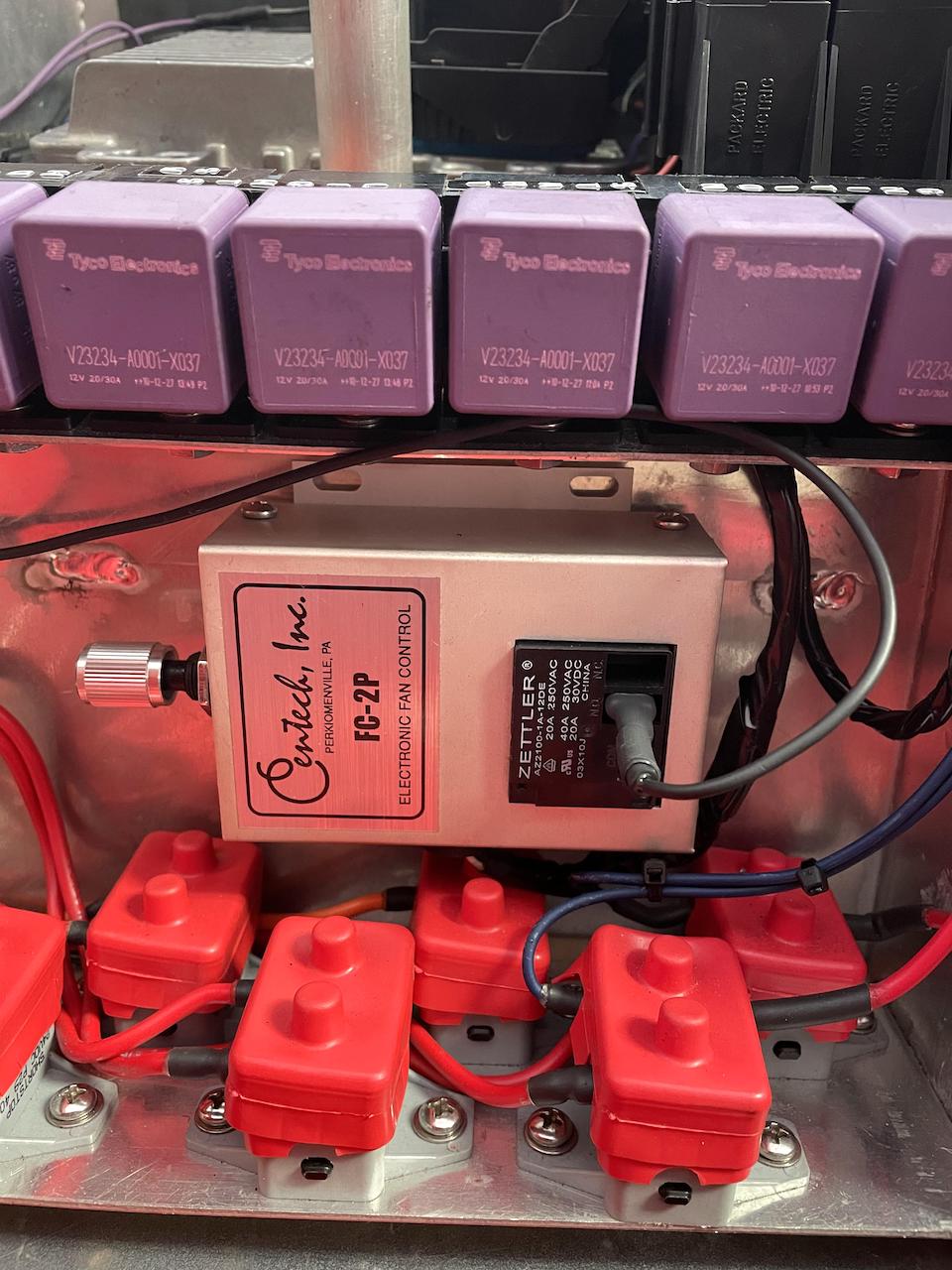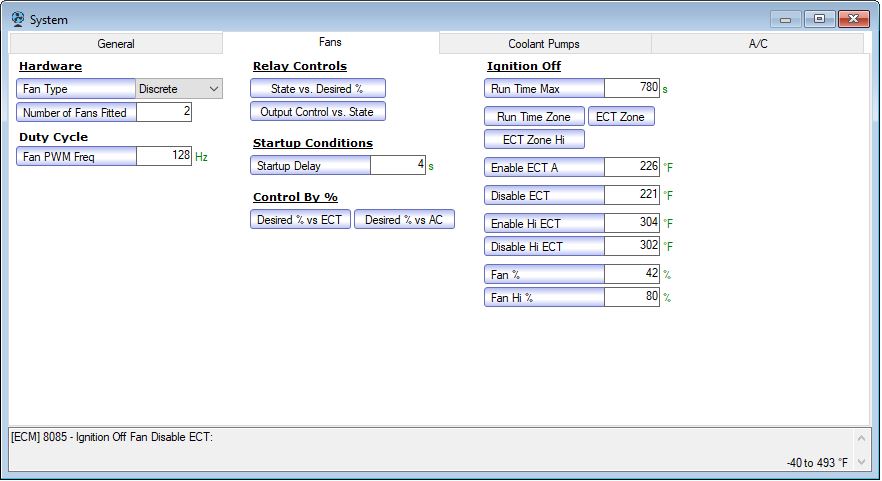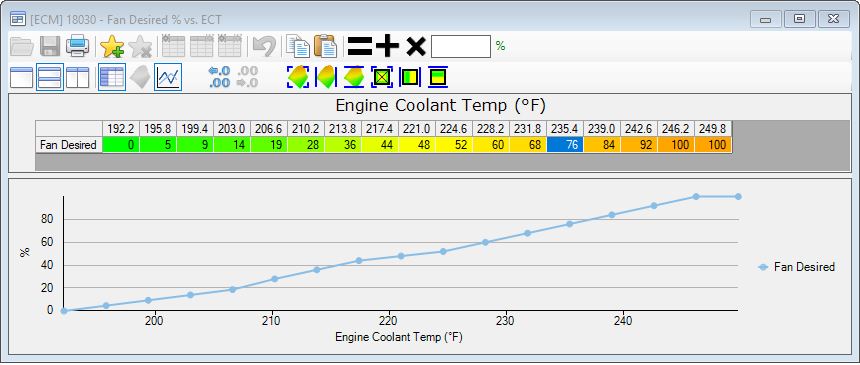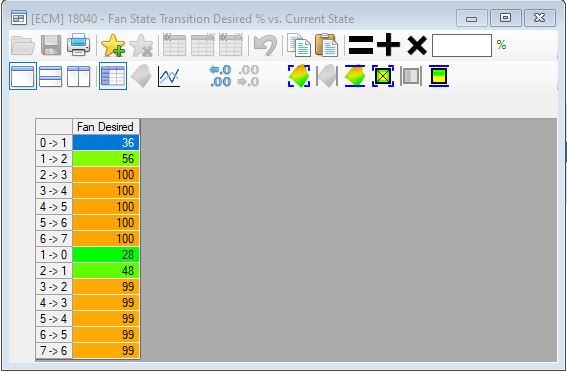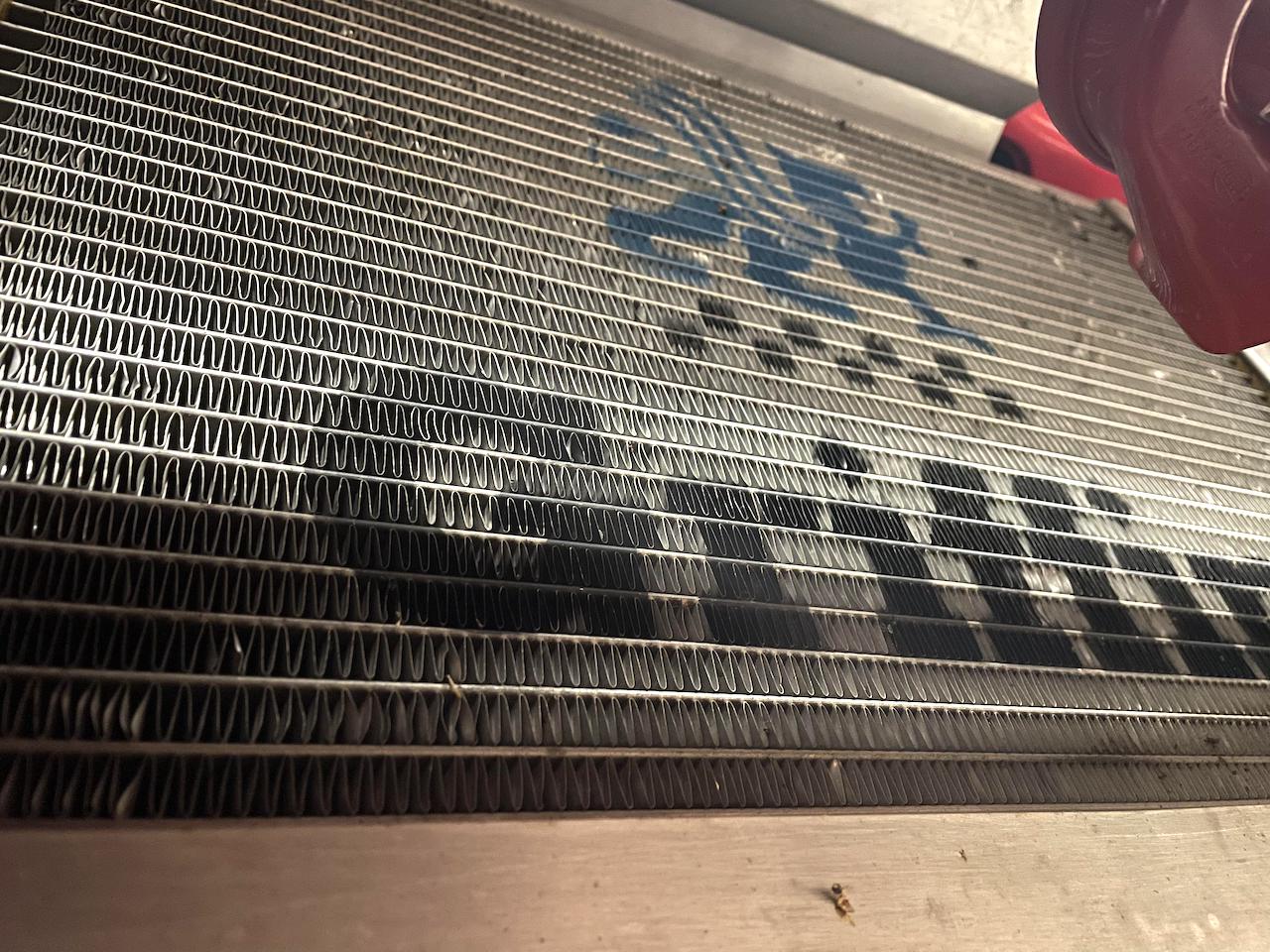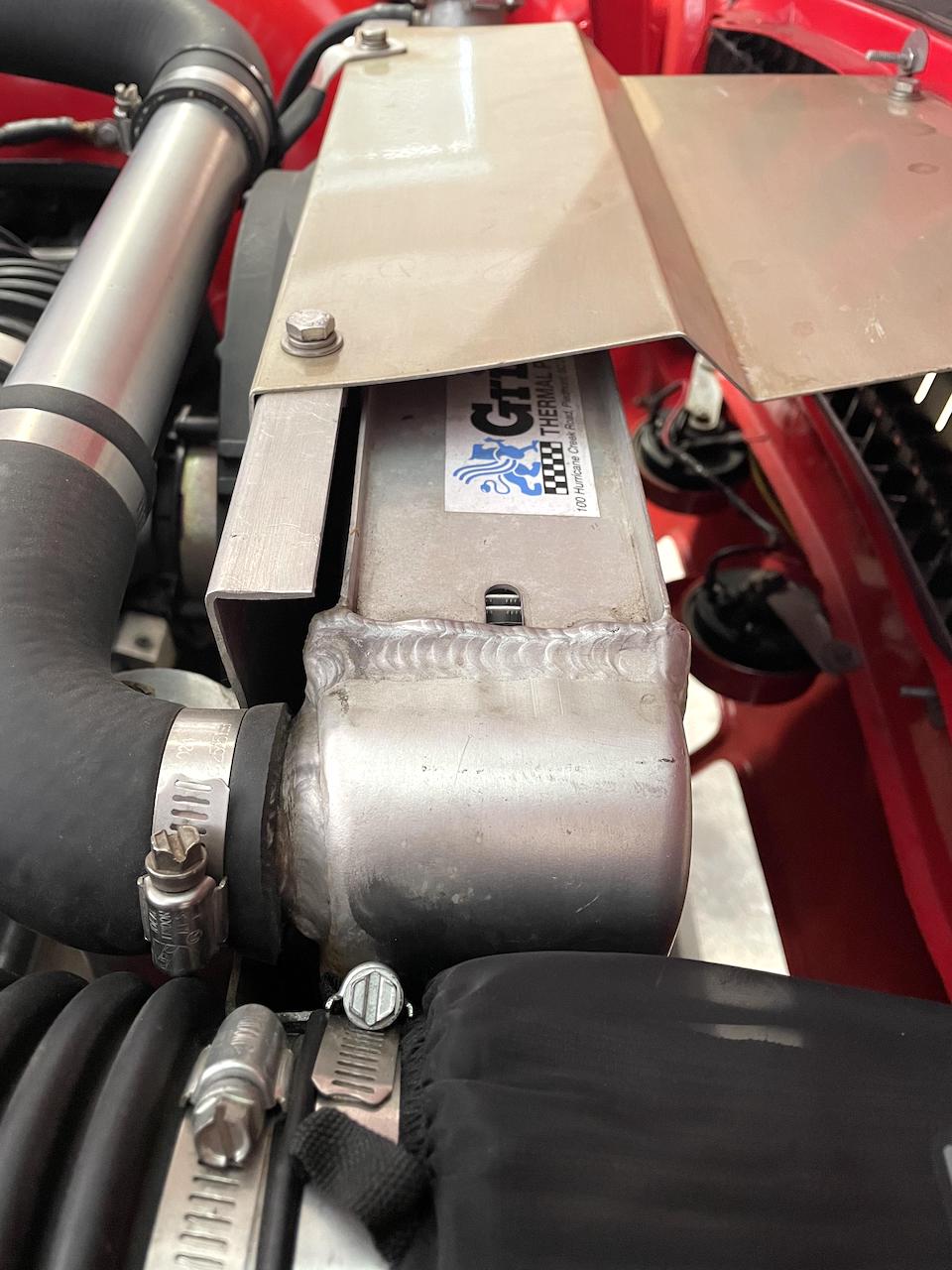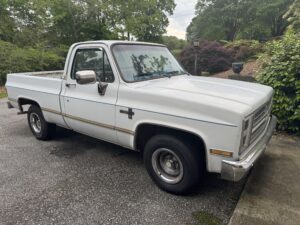
1985 Chevy C10 Silverado Squarebody
This post is about my 1985 Chevy C10 Silverado Squarebody pickup, powered by an L98 Tuned Port Injection (TPI) engine from a 1990 IROC Camaro. This is an old-school conversion, that my late cousin Jim Thompson did many years ago.
I have put about 800 miles on the truck during the last few months and so far, it has been a blast to drive. The Frost White (RPO 12) paint is not as shiny as it was when new, but it is original. For a 40 year-old truck, the body is still free of dings and most important, no rust. The interior still has the original blue carpet and the bench seat has a stylish ‘blanket’ cover – as George Takei would say, “oh my!”.
Short History
The truck was driven by it’s first owner until sometime in January of 1988, when the second owner acquired the truck with 32k miles. Second owner was a friend of Jim’s and sold the truck to JIm’s mom in the fall of 1993, with 101k miles. Since then, the truck has been a member of the family.
According to the RPO build sheet in the glovebox (see below), the truck was born on April 26, 1985 powered by an LE9 5.0L V8.
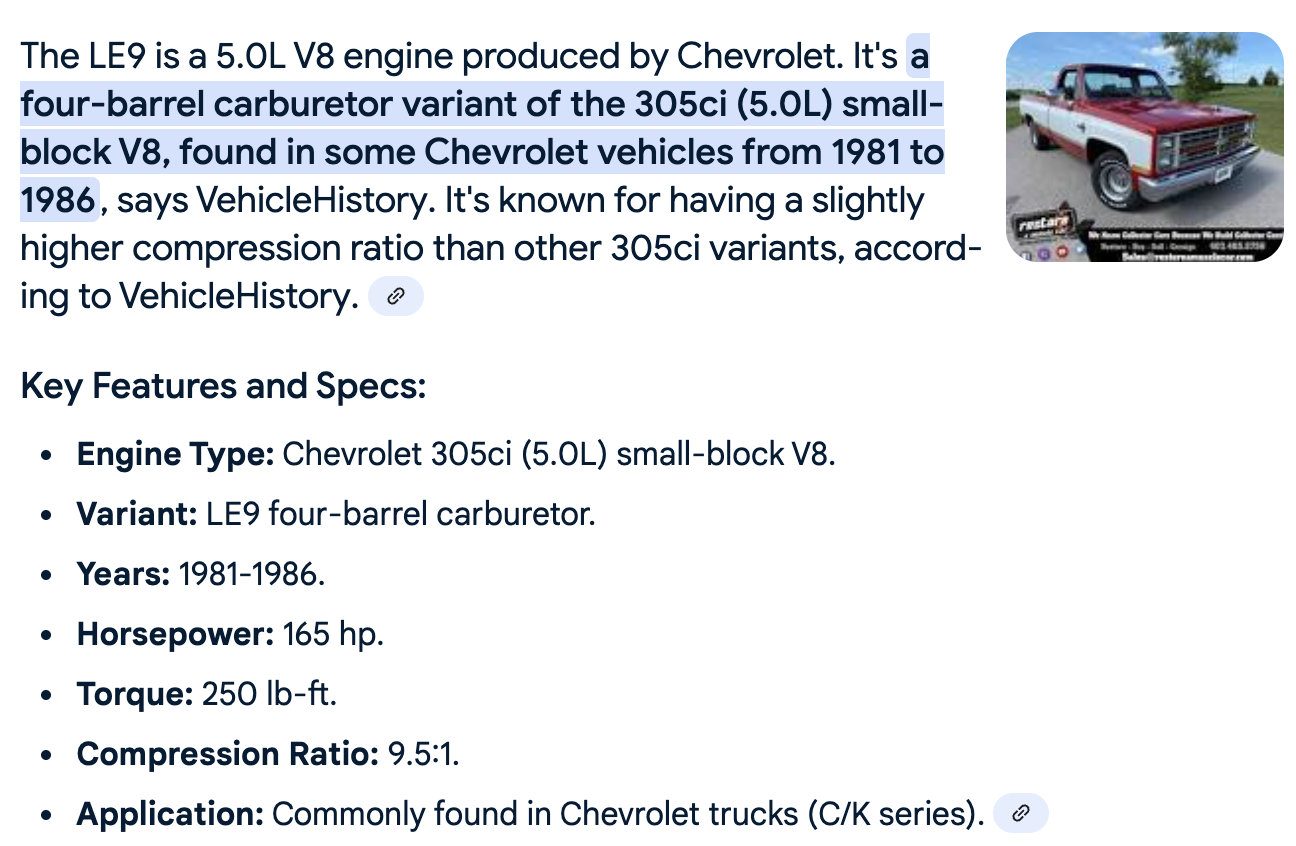
Google Search result for the LE9 5.0L V8…
According to Jim’s documentation I have found, the engine started to give trouble and somewhere around the 130k mile mark, Jim decided to pull the tired engine and update it with an L98 Tuned Port from a 1990 IROC Camaro. The gearbox is a 700R4, also from the IROC. From the notes I found, Jim bought the IROC engine with about 32k miles.
Today, the truck shows 175k miles. So doing the math, the Tuned Port has about 77k miles. Barely broken in, right? Hehe…
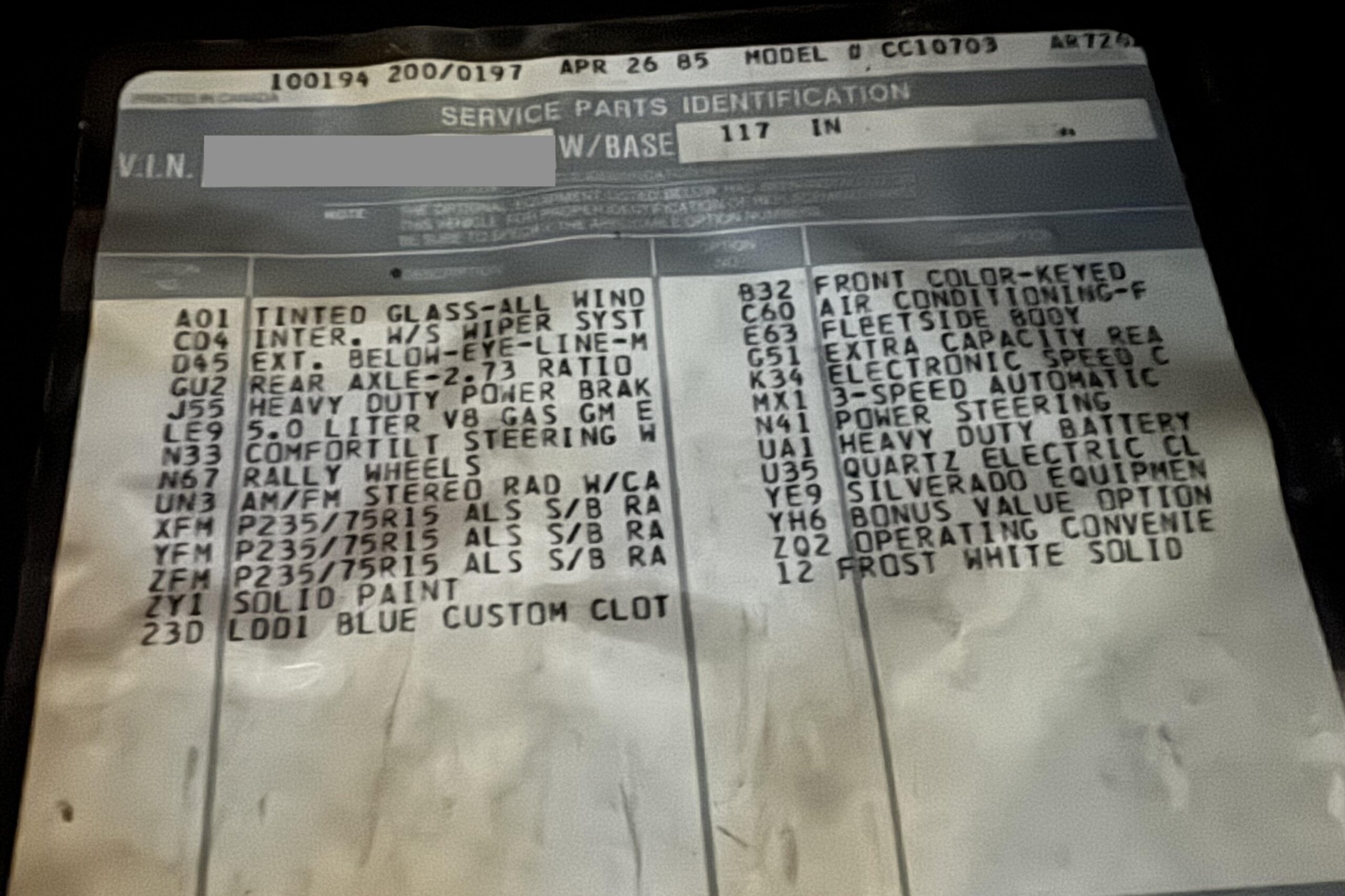 This is the RPO build sheet in the glovebox. Unfortunately, I do not have the window sticker – wonder what that would look like? No telling what this truck sold for back in 1985. I’ve found some videos on youTube from the day, and the Silverado was “the” truck to have.
This is the RPO build sheet in the glovebox. Unfortunately, I do not have the window sticker – wonder what that would look like? No telling what this truck sold for back in 1985. I’ve found some videos on youTube from the day, and the Silverado was “the” truck to have.
More About the Truck…
Jim had a thing for Squarebody C10’s. He had two, actually. The ‘shop truck’ was a tan 1985 that was once-upon-a-time in the US Forestry Service. It was a plain-jane C10. No carpet, no headliner. Jim put an LSx in that one, and it was a ton of fun. I could not keep it all, so the ‘shop truck’ has a new owner now. This is what it looked like:
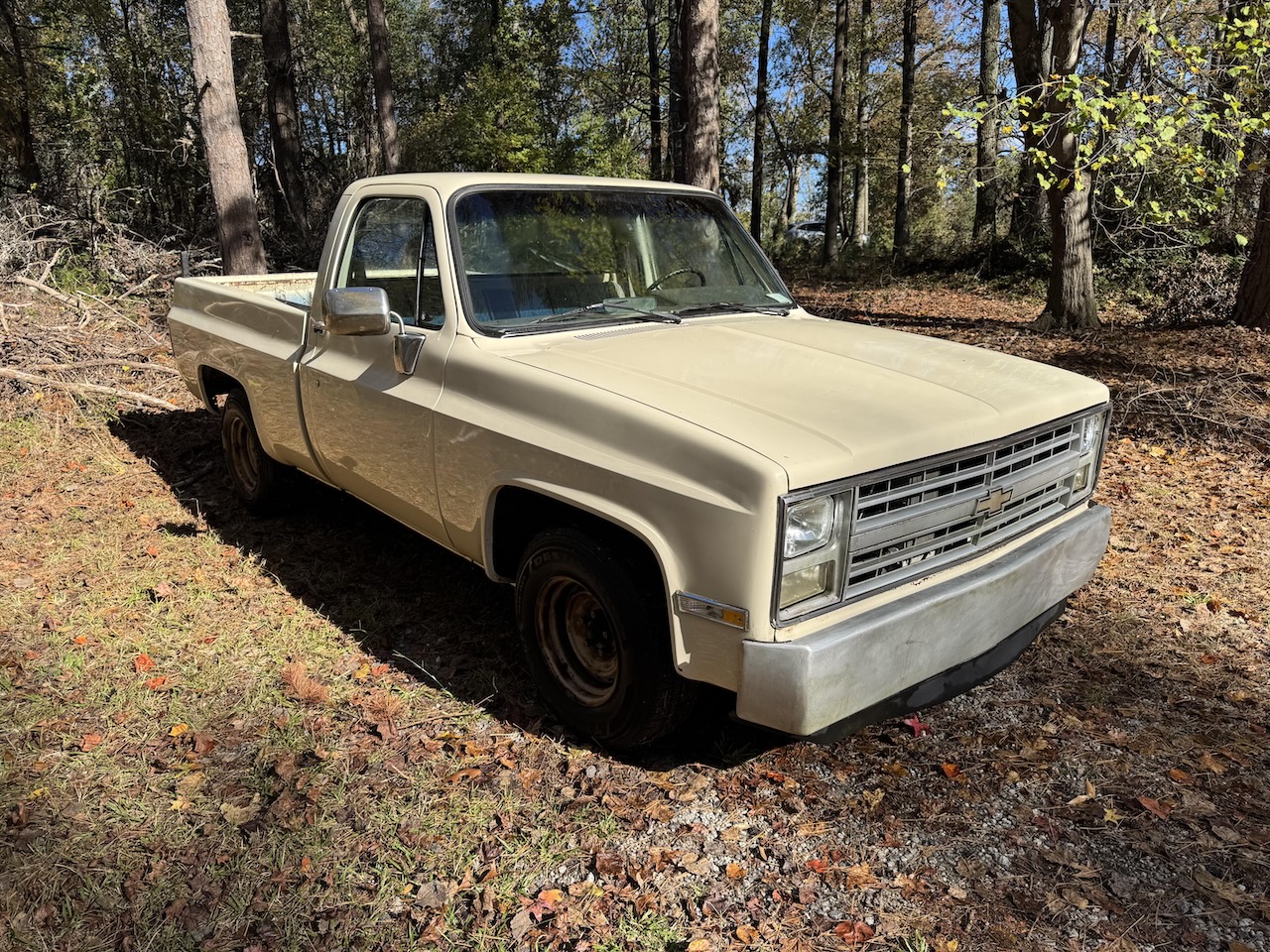
Dig that custom aluminum front bumper…
Thes second Squarebody is the Frost White C10, and has always been a bit special, perhaps because his mom (my aunt) drove it for many years. After my aunt passed, the truck did not get driven much. That would account for the 175k miles after 40 years.
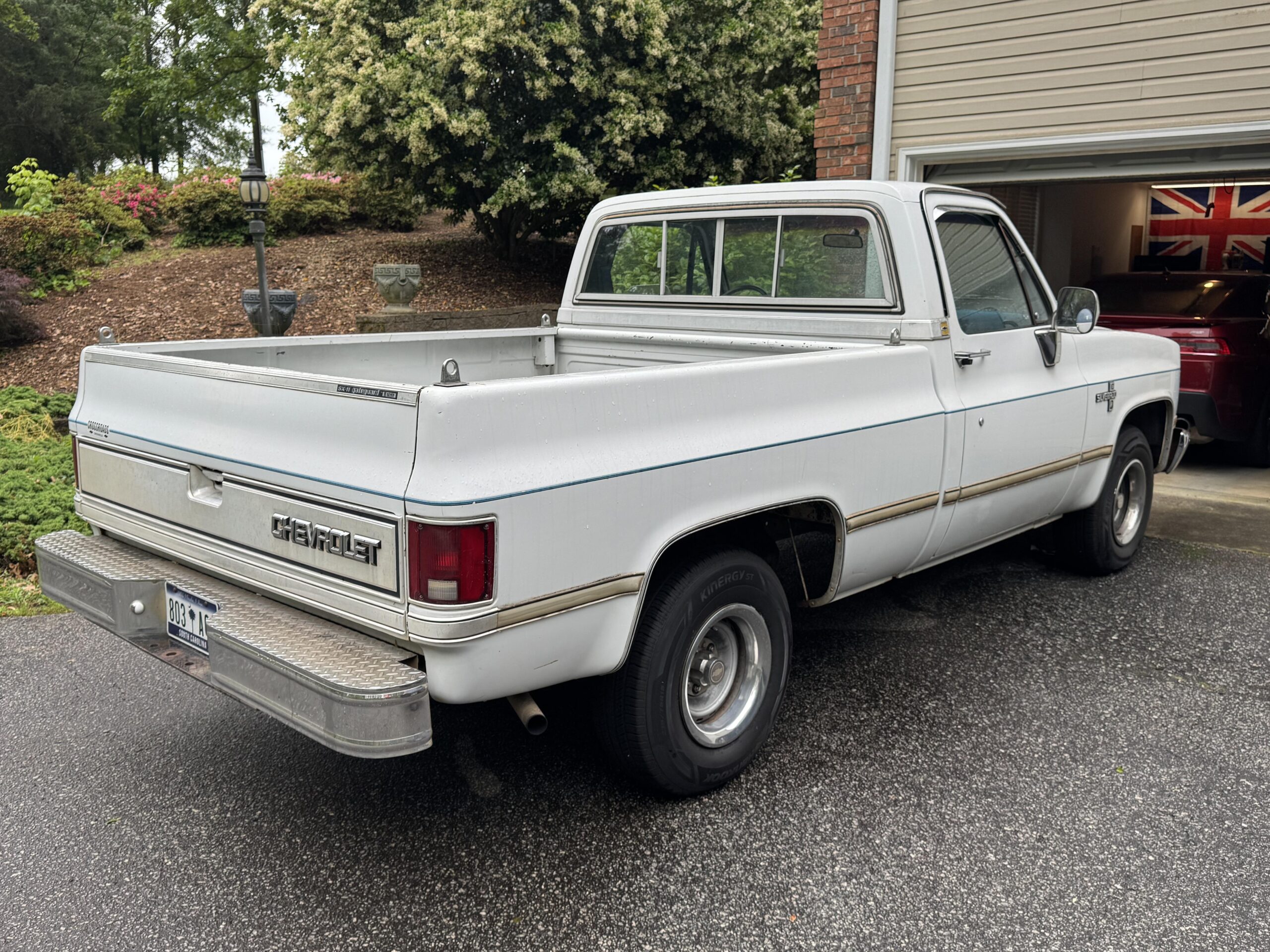
The interior is a bit tired… Blue carpet and blue accents on the doors – all original. The seat cover – well, can’t beat the ‘blanket’ cover look…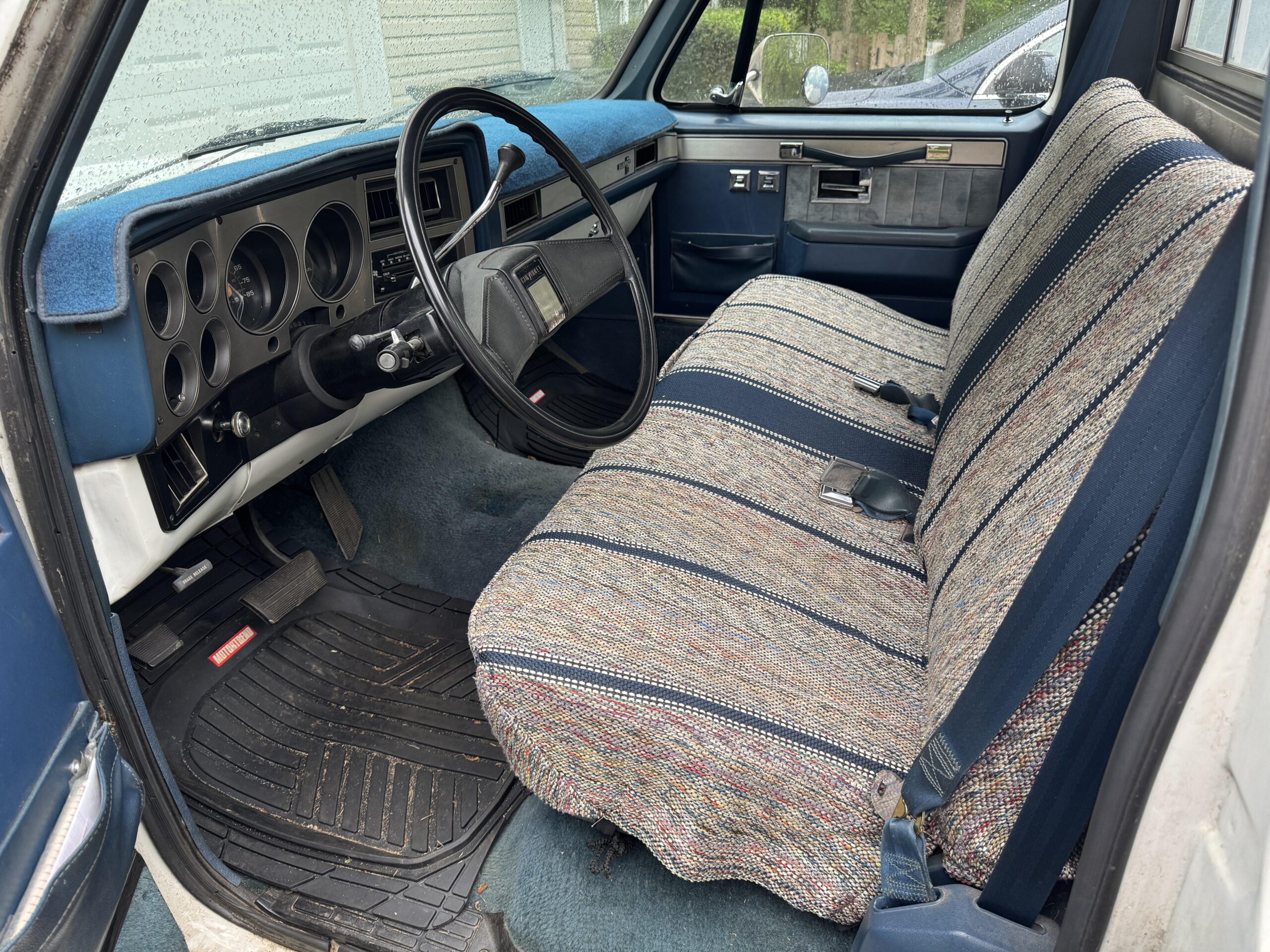 Next, high tech from the 80’s… Dig those power window and power door lock switches. Too bad the boys from GM decided to run full voltage to the window motors and locks through the switch. Not so good after 40 years because the windows would barely move up or down. I re-wired both doors with relays and now the windows go up and down smooth as they did in 1985. The door locks work flawlessly with that period correct “click”.
Next, high tech from the 80’s… Dig those power window and power door lock switches. Too bad the boys from GM decided to run full voltage to the window motors and locks through the switch. Not so good after 40 years because the windows would barely move up or down. I re-wired both doors with relays and now the windows go up and down smooth as they did in 1985. The door locks work flawlessly with that period correct “click”.
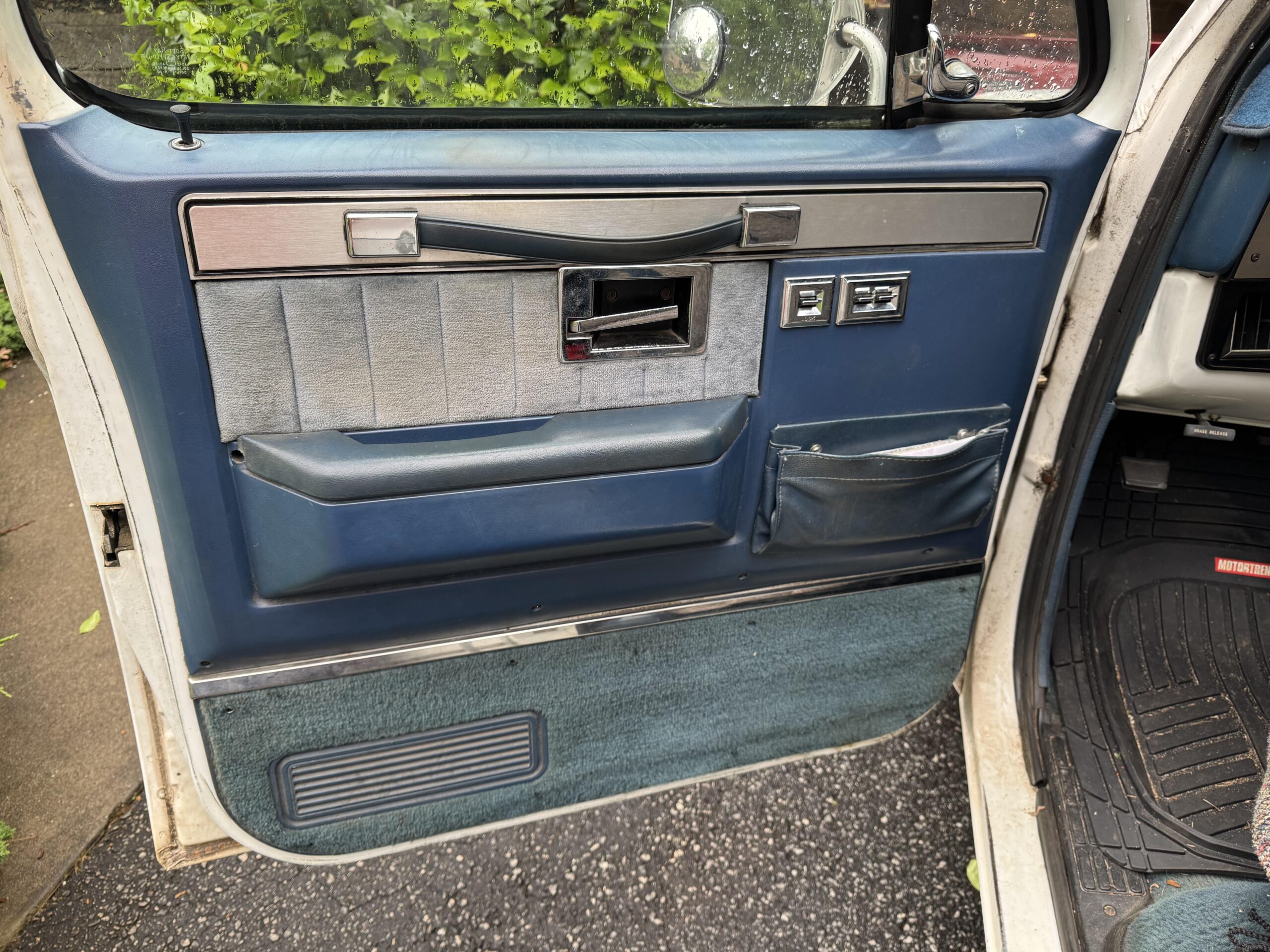
The dash is still decent under that blue cover…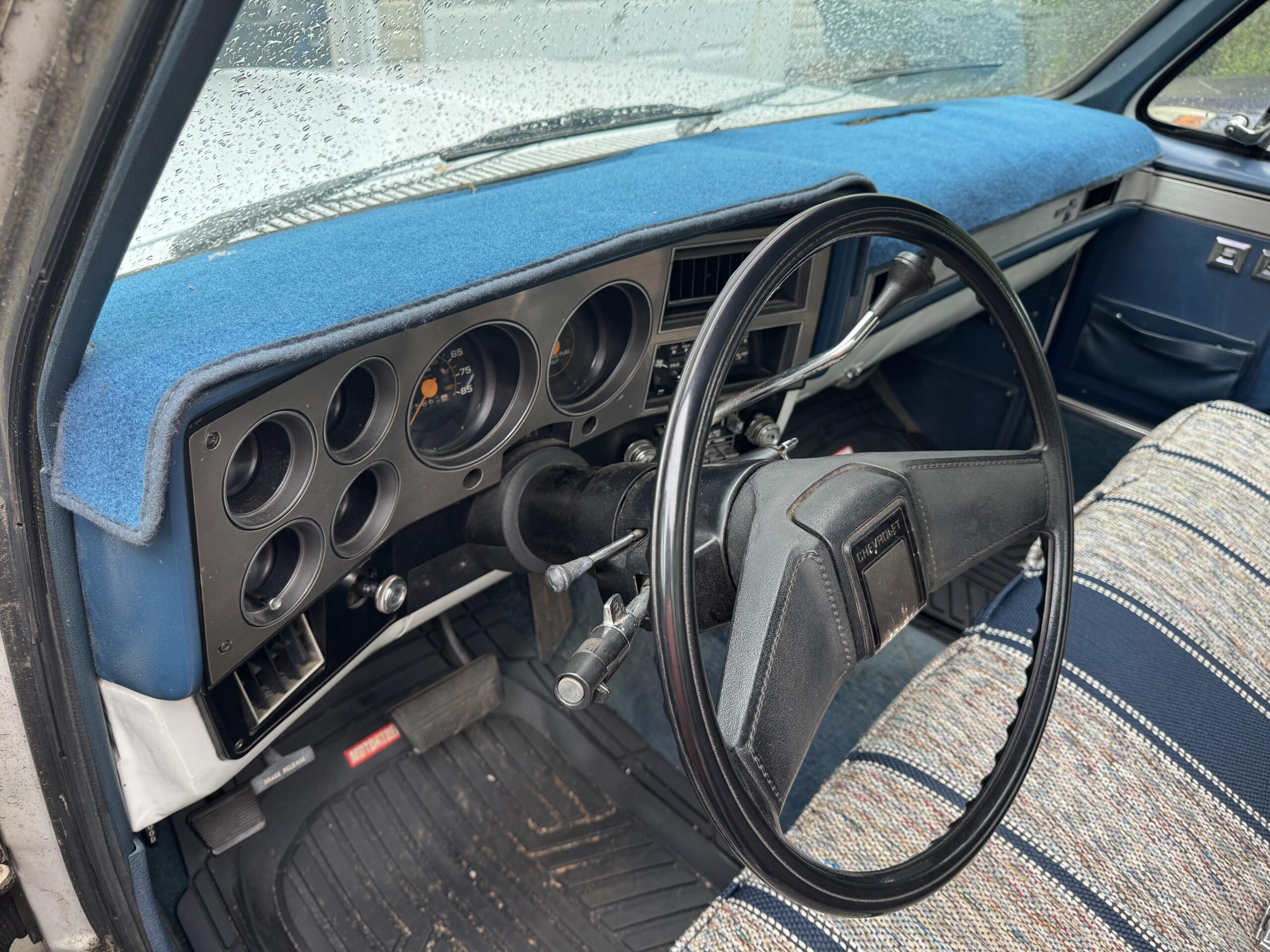 The radio still works. When it wants to. And there are four (4) speakers that work very well, mind you. I’ve noticed when the radio gets a bit warm, it will play intermittently. On the list to fix is a new period correct replacement. All instruments work, even the clock. Speedo is off by about 5 mph. I suppose the reluctor wheel on the 700R4 is slightly different from the one that was in the original tranny. No worries, I’ve checked this with the iPhone app and it is consistent across the range. Lucky it shows under rather than over actual speed…
The radio still works. When it wants to. And there are four (4) speakers that work very well, mind you. I’ve noticed when the radio gets a bit warm, it will play intermittently. On the list to fix is a new period correct replacement. All instruments work, even the clock. Speedo is off by about 5 mph. I suppose the reluctor wheel on the 700R4 is slightly different from the one that was in the original tranny. No worries, I’ve checked this with the iPhone app and it is consistent across the range. Lucky it shows under rather than over actual speed…
Tilt wheel works, turn signals, headlights, check. There is no cruise control though – who needs it? Ditto for the windshield squirter thinggies. And there seems to be some malfunction with the dome light. Oh and the horn does not work either. I need to add all that to the list of things to fix.
Check this out… Sliding rear window! Oh and it is nice to lower the windows, open the rear window and have a nice breeze in the cab.
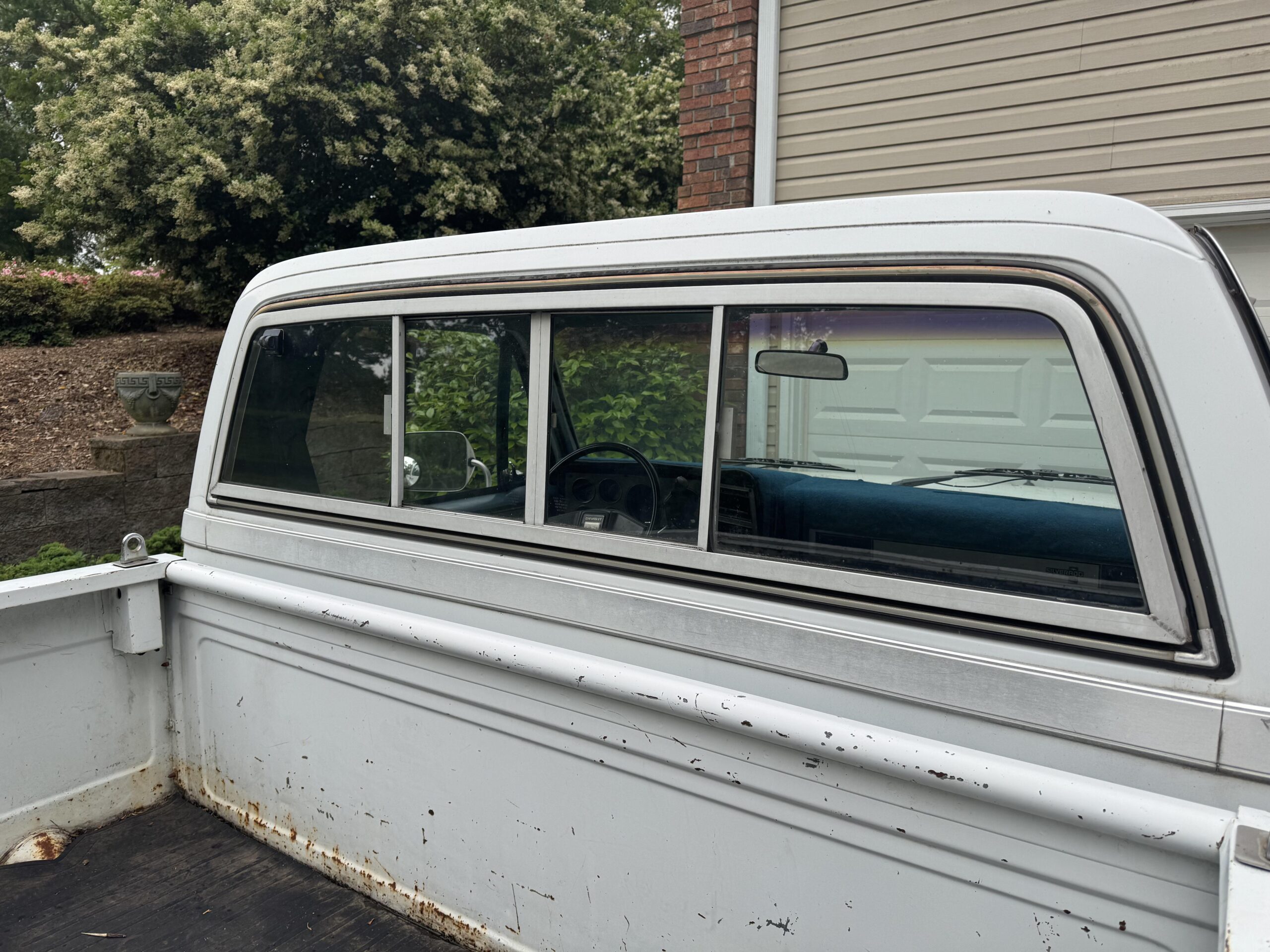
About that Tuned Port Injection L98…
I think the L98 has always been a favorite of mine. The L98 powered Camaros and Corvettes of the era. Yeah, it ran out of breath quickly but that intake with those 8 runners each going to the intake ports of each cylinder was sexy as it gets.
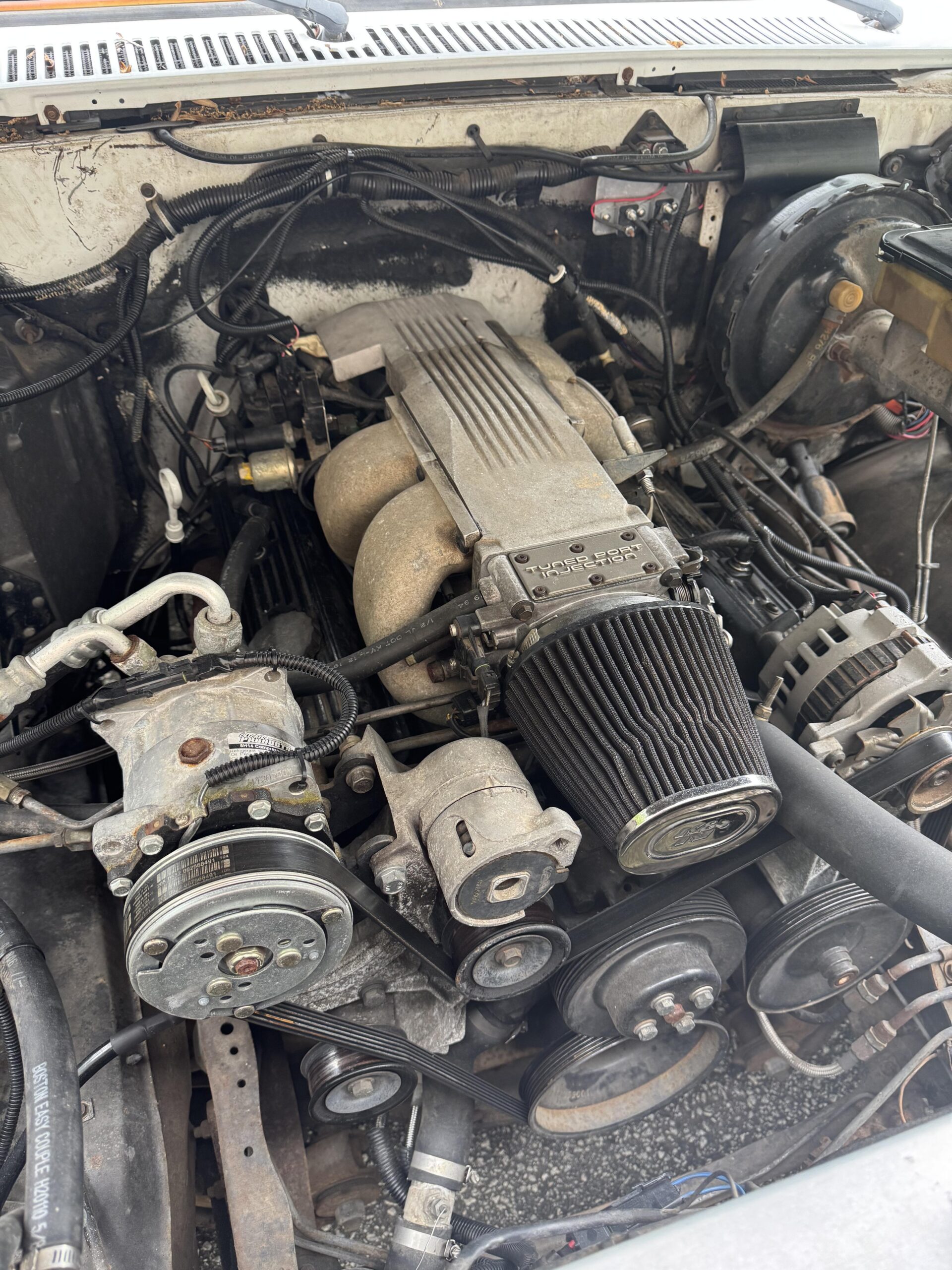 But wait a minute… The photo above shows four siamesed runners. What’s up with that, where are the 8 runners? Well, back in the day this intake was very special. This is the SLP high flow version. This was supposed to gain you a ton of foot-pounds and make your car run better. This setup was not cheap. Does it live up to the hype? Who knows… Hehe…
But wait a minute… The photo above shows four siamesed runners. What’s up with that, where are the 8 runners? Well, back in the day this intake was very special. This is the SLP high flow version. This was supposed to gain you a ton of foot-pounds and make your car run better. This setup was not cheap. Does it live up to the hype? Who knows… Hehe…
I do have a set of original runners, but they are a major pain in the ass to swap. Given this has not been touched in years, I will leave this alone thank you very much. The last thing I want to do is break a bolt and then be up the creek.
Engine management you ask? This is controlled by an OBD I ECM. There was an outfit called Street & Performance in Mena, Arkansas that made a killer wiring harness. Jim had a contact there that was on speed-dial on his phone. Tony was his name. We used to call Tony and he would help us out with L98 and LT1 setups. That guy was a genius. No telling what happened to Tony but that is who Jim got the harness from. I don’t think Street & Performance exists anymore. But back in the day, they where the shit when it came to this kind of stuff.
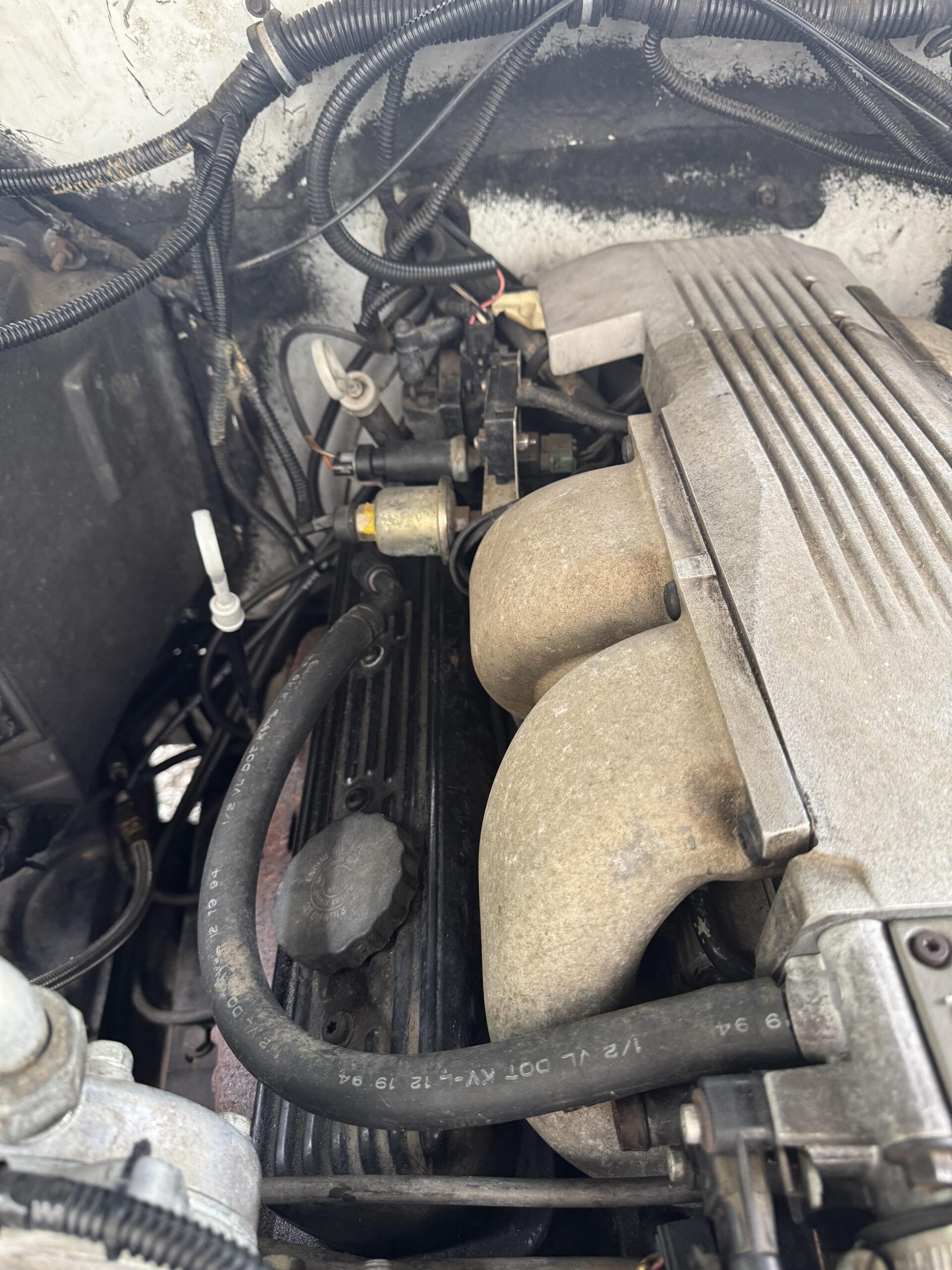 This photo shows a closeup of the siamesed runners. They have a partition inside but the first inch or so, is the entire width of the runner. Towards the back of the intake is a cover that hides the HEI distributor. The Camaro came with a cheap, plastic version. What you see in the photo above is the Corvette version – it was all metal and fits and looks nicer than the cheap plastic one.
This photo shows a closeup of the siamesed runners. They have a partition inside but the first inch or so, is the entire width of the runner. Towards the back of the intake is a cover that hides the HEI distributor. The Camaro came with a cheap, plastic version. What you see in the photo above is the Corvette version – it was all metal and fits and looks nicer than the cheap plastic one.
“Does it have AC?”, you ask… Well yes it does!
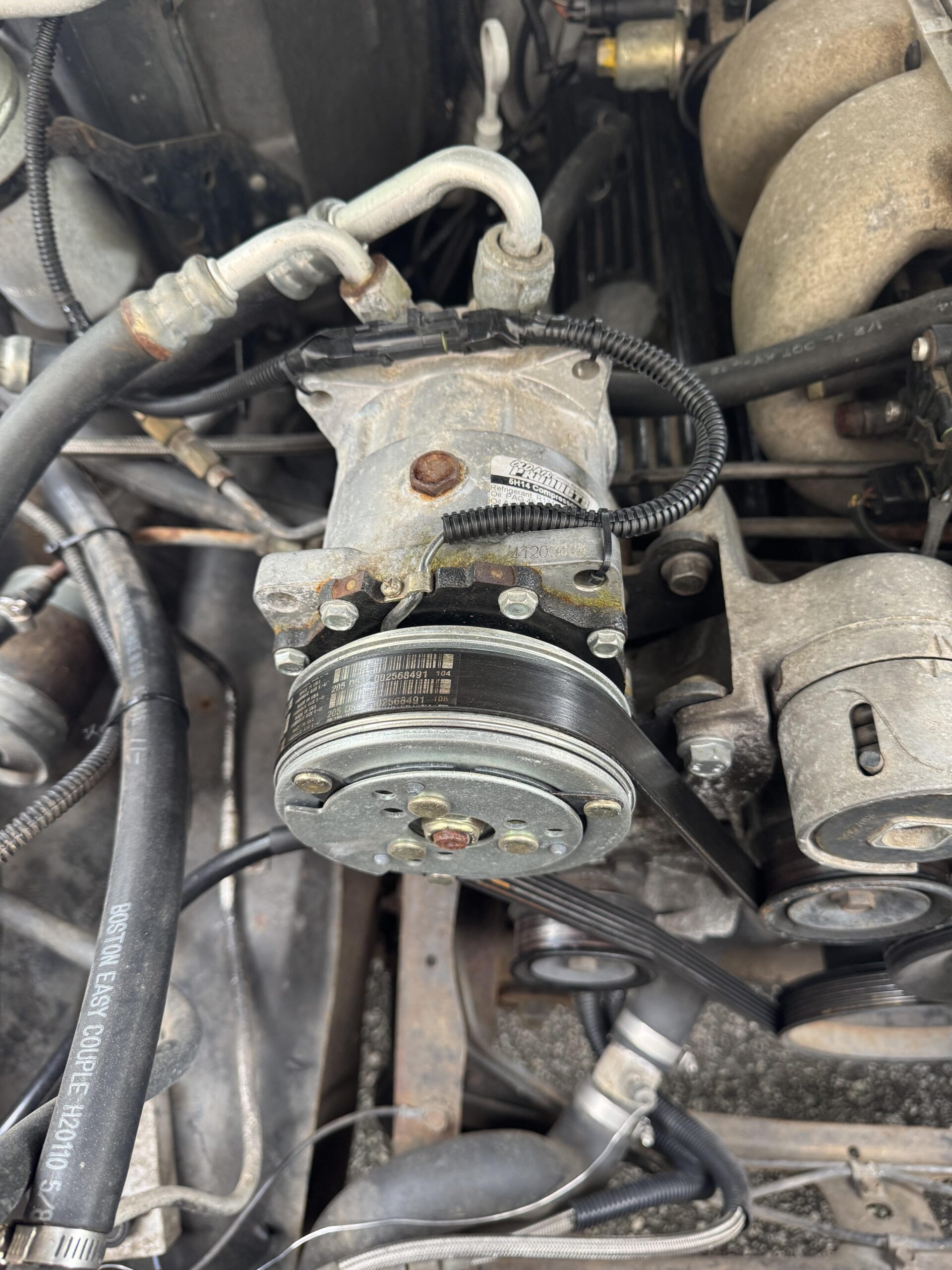 “Is it cold?”… Hell yeah, it is!!!
“Is it cold?”… Hell yeah, it is!!!
Jim mounted an aftermarket compressor. This enabled the use of modern refrigerant, not Freon. Yeah, he added a big-ass condenser in front of the radiator and yes, it works. We have cold air! Not too shabby for a 40 year-old truck.
Another problem that I recently fixed was the vacuum check-valve leading to the vent system in the cab. The only thing working was the heater vent. The dash vents did not work. Googling and watching some youTube videos pointed to a possible issue with the check valve. Sure enough, a couple of bucks fixed that. Now all vents work. Even the defroster works! Amazing what you can learn on youTube.
A keen eye will notice the absence of radiator fan. Right? Well, Jim was very fond of SPAL fans – that is what those Italian red cars with the little prancing horse on the hood come equipped with too! This is what the air movement mechanism looks like…
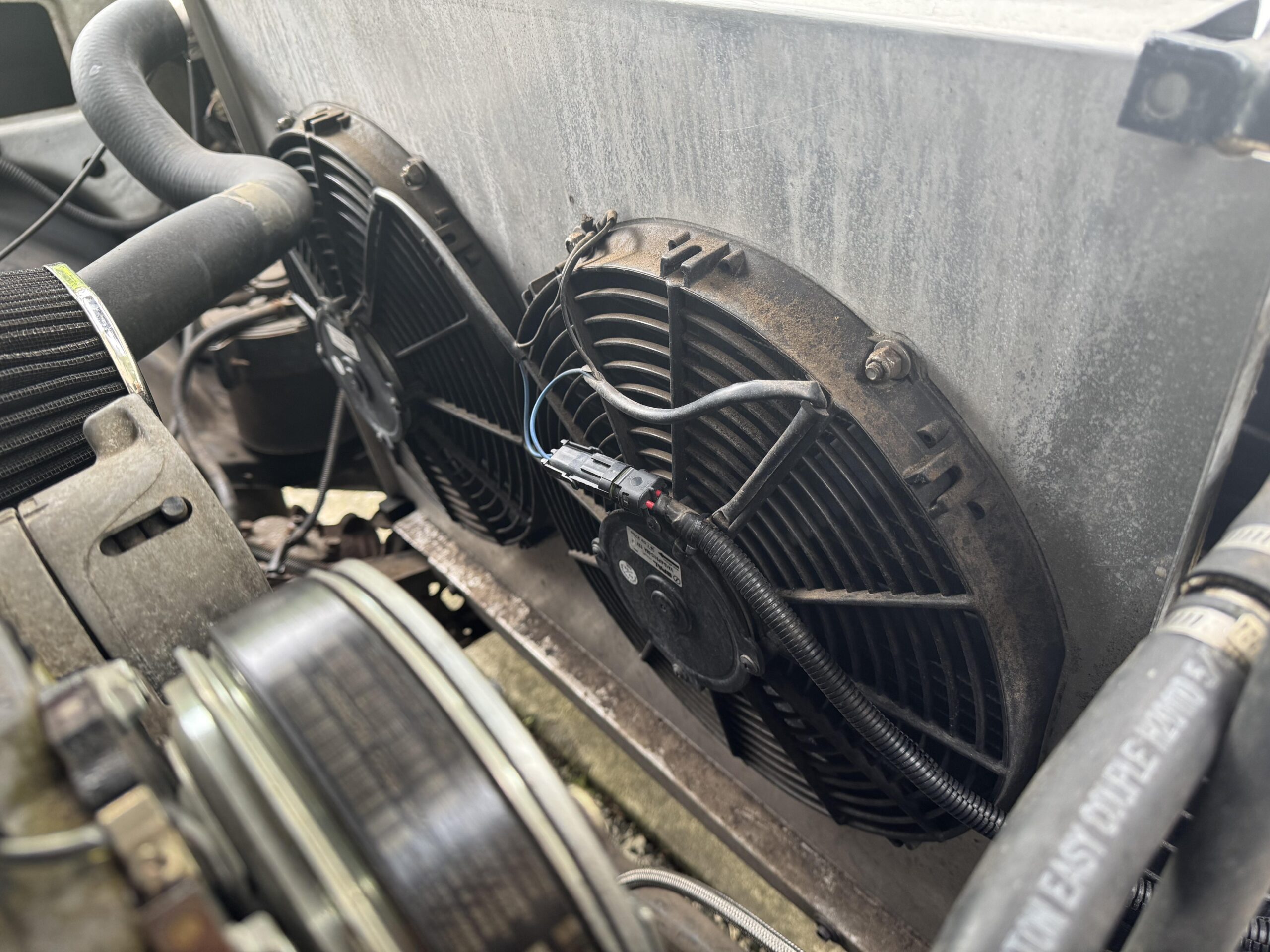 Two 13″ SPAL electric fans keep things cool. One is wired to a thermostat pickup plumbed into the bottom coolant hose and the other is wired into a trinary switch on the AC side of things. So when refrigerant pressure reaches a certain point, it kicks the fan on and this keeps the refrigerant happy. Brilliant!
Two 13″ SPAL electric fans keep things cool. One is wired to a thermostat pickup plumbed into the bottom coolant hose and the other is wired into a trinary switch on the AC side of things. So when refrigerant pressure reaches a certain point, it kicks the fan on and this keeps the refrigerant happy. Brilliant!
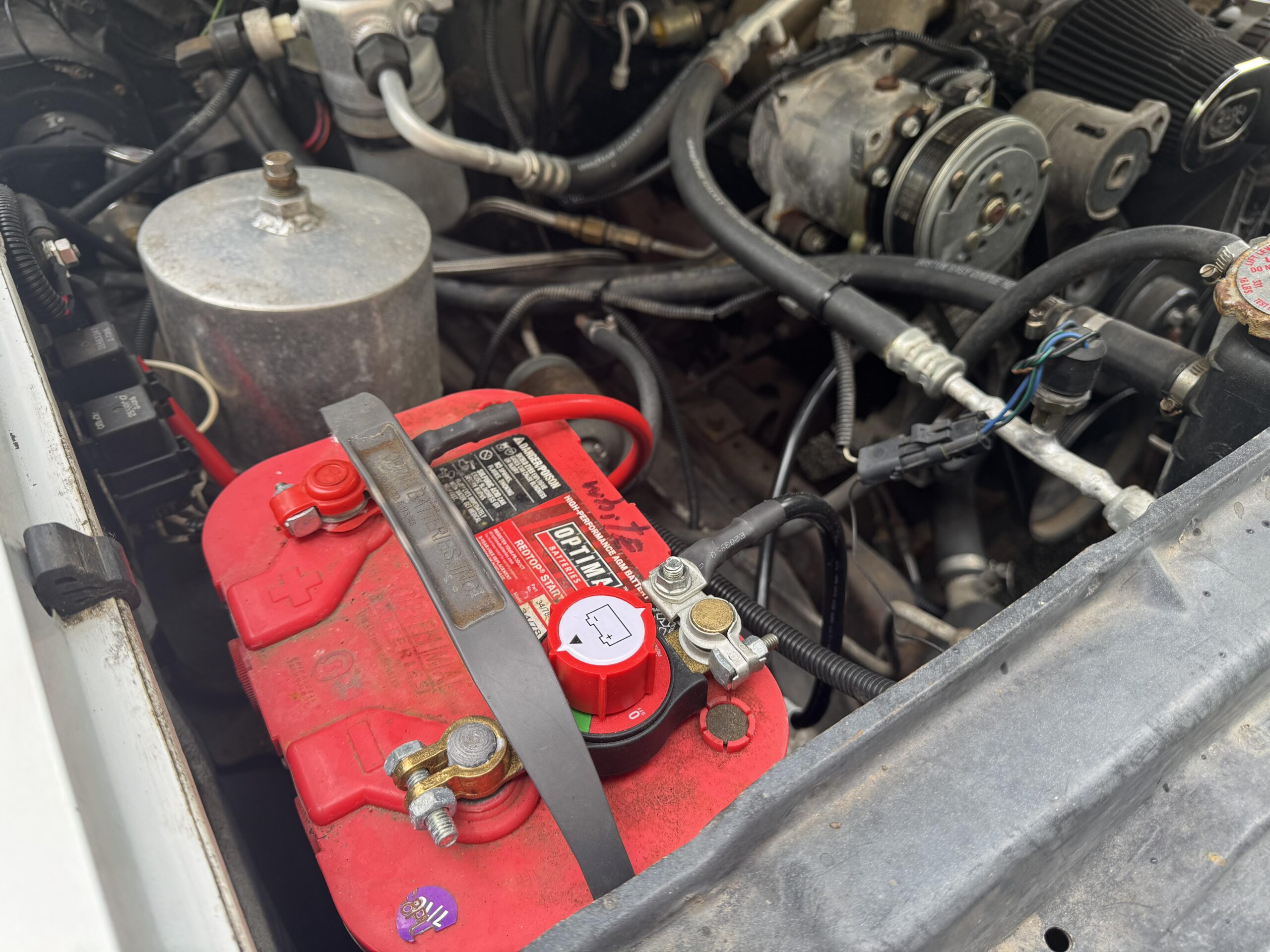 Here is a picture of the red-top Optima battery. I added the quick disconnect to prevent it from draining down. Behind is the custom made overflow tank – Jim made that from aluminum.
Here is a picture of the red-top Optima battery. I added the quick disconnect to prevent it from draining down. Behind is the custom made overflow tank – Jim made that from aluminum.
Oh and check this out…
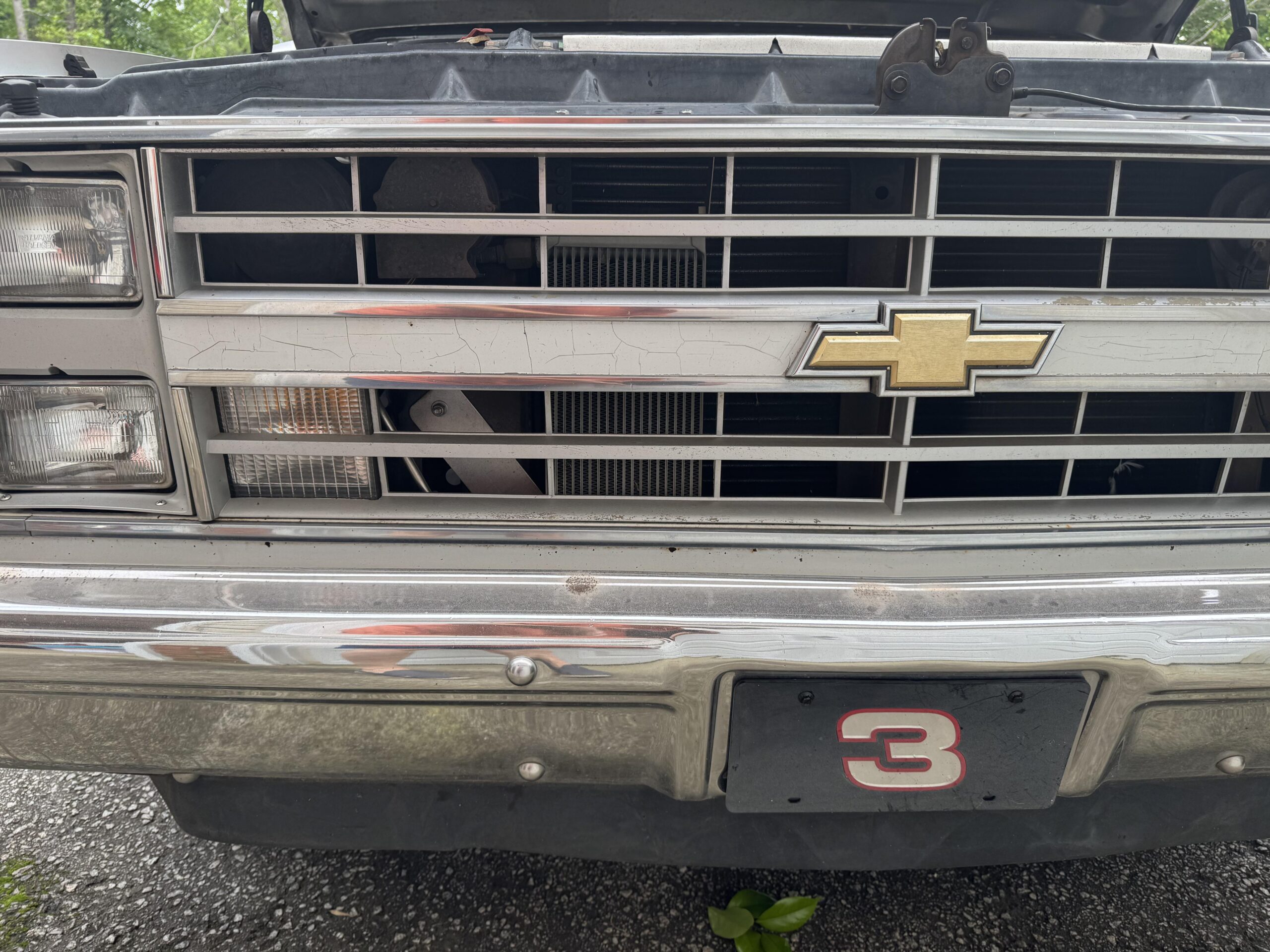 Lurking behind the grill is a MOCAL cooler. Its plumbed as a transmission oil cooler.
Lurking behind the grill is a MOCAL cooler. Its plumbed as a transmission oil cooler.
And, I added the #3 tag. Long live The Intimidator. My friend Mike said this was a very “period correct” accessory. So there.
What about cooling engine oil? For this, we need to check out the oil filter. Have no idea what this originally came on, but Jim decided to hang the largest oil filter he could find. Check out this monstrosity of a filter:
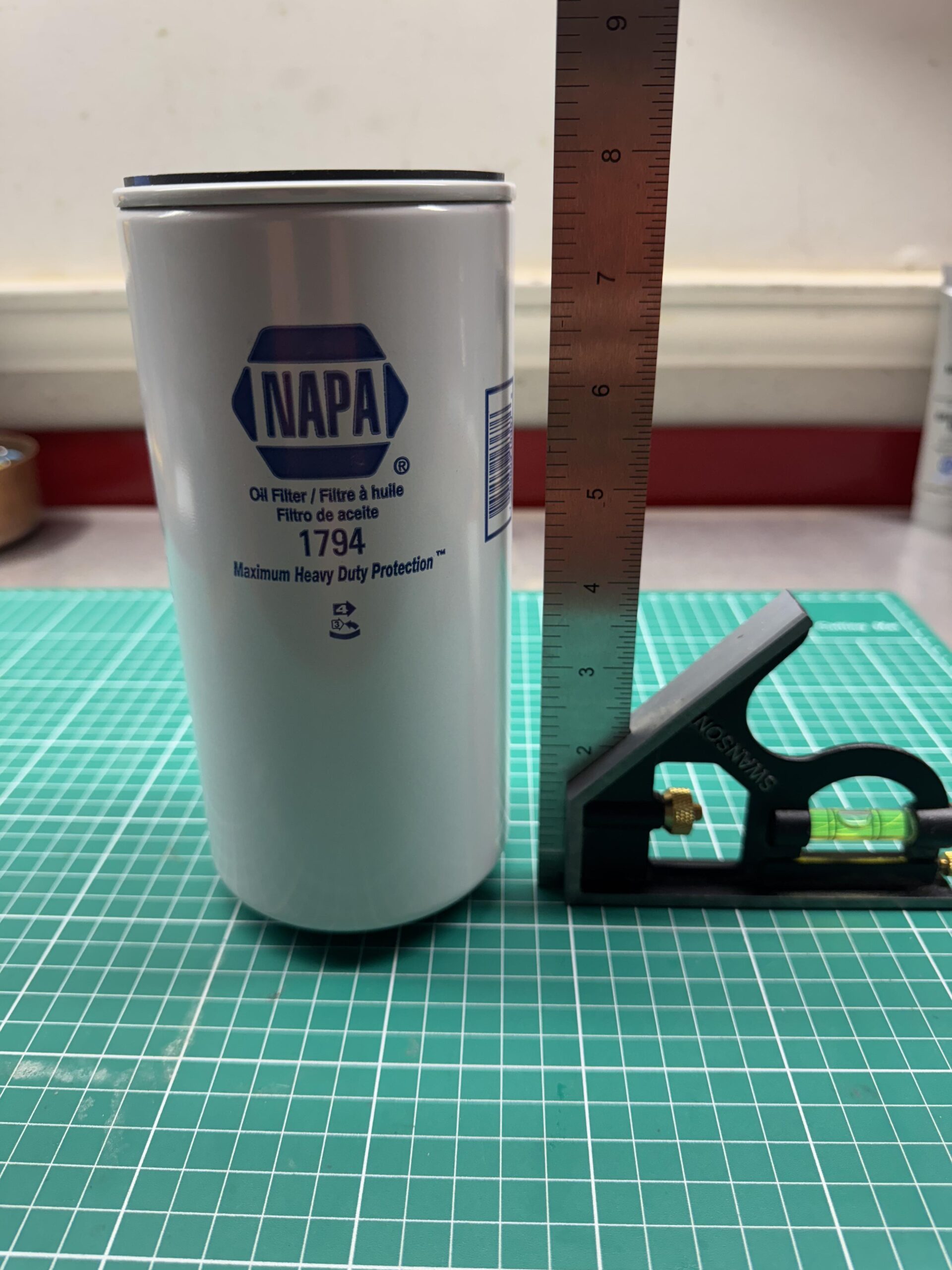
8 inches long – this is a righteous sized filter!
This will hold an extra quart I suppose, and is also giving more surface area to keep engine oil cooler. And we can get away with that because this is a C10 – try this on an IROC… Yeah right!
The other side of the L98. Unfortunately the cast iron headers were not JetHot coated. They are rusty and I can’t imagine how hard it would be to get those bolts off. So they stay put.
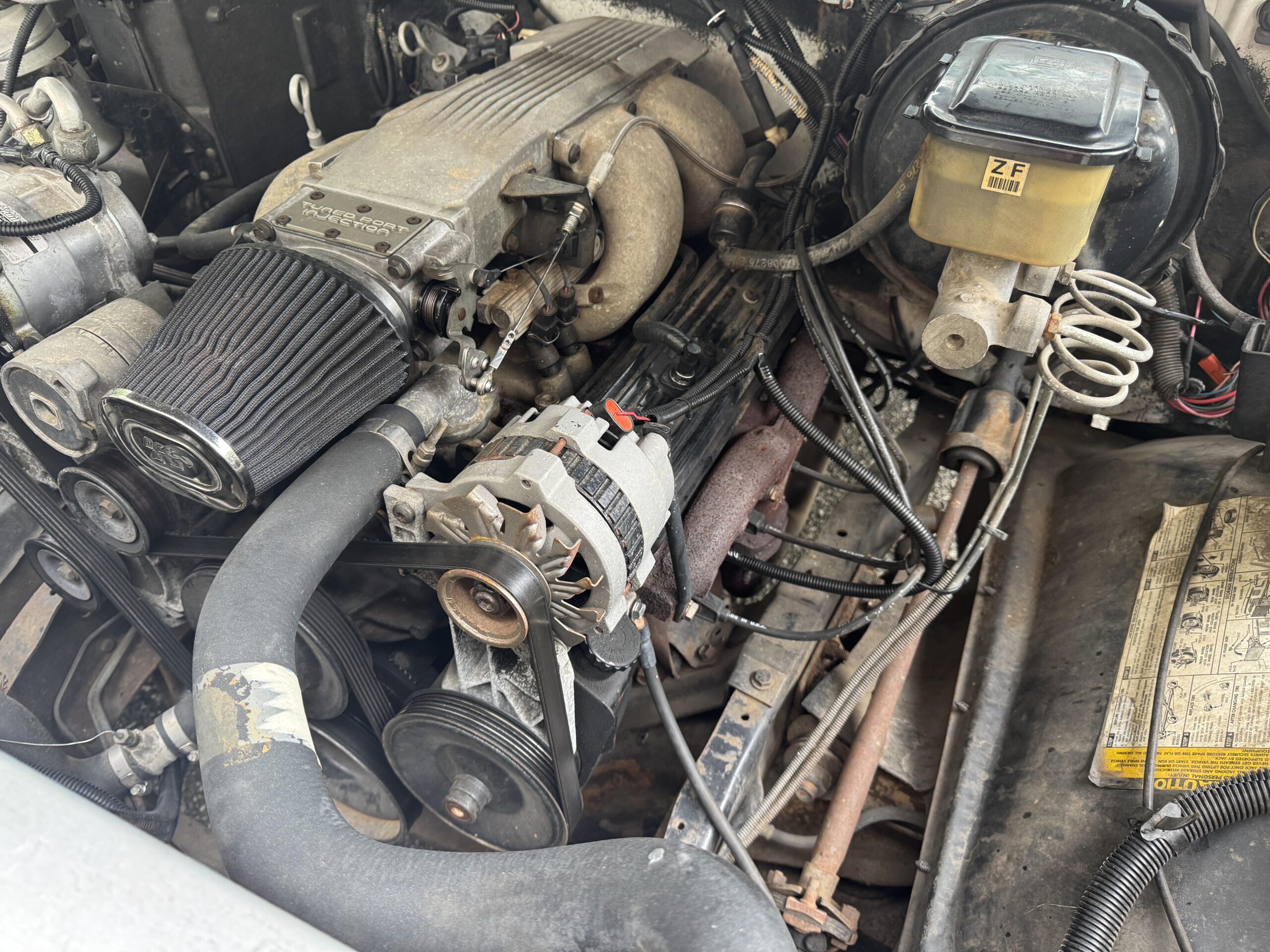 In Closing
In Closing
When I first started driving the C10, it would shut down at red lights for no good reason. Turns out the intake where the butterflies live was filthy, covered in carbon residue. I took the idle air controller out and replaced it. It helped some. So I took throttle body apart and cleaned it in an ultrasonic cleaner. What a difference that made. Bought some new gaskets and put it back together. That solved the problem. If you don’t have an ultrasonic cleaner, get one. Amazing what you can do with that piece of kit.
I bought a new set of tires and had them mounted. The old tires were just unsafe. Yes, I’ve thought about getting a set of drop-spindles and maybe relocating the rear spring to lower the truck. I asked Jim about this time or two, and he would always say “leave it stock”. So for now, it stays stock.
The truck is fun to drive. I’ve had many thumbs’ up from other folks at red lights. Yeah, this is a keeper. It runs decent, just have to remember this is not a modern LSx and the 700R4 is dated, but for what it is, it does the job very well. I also have to remember the rear-end is a 2.73 and is not a posi. But, it is plenty fast for what it is.
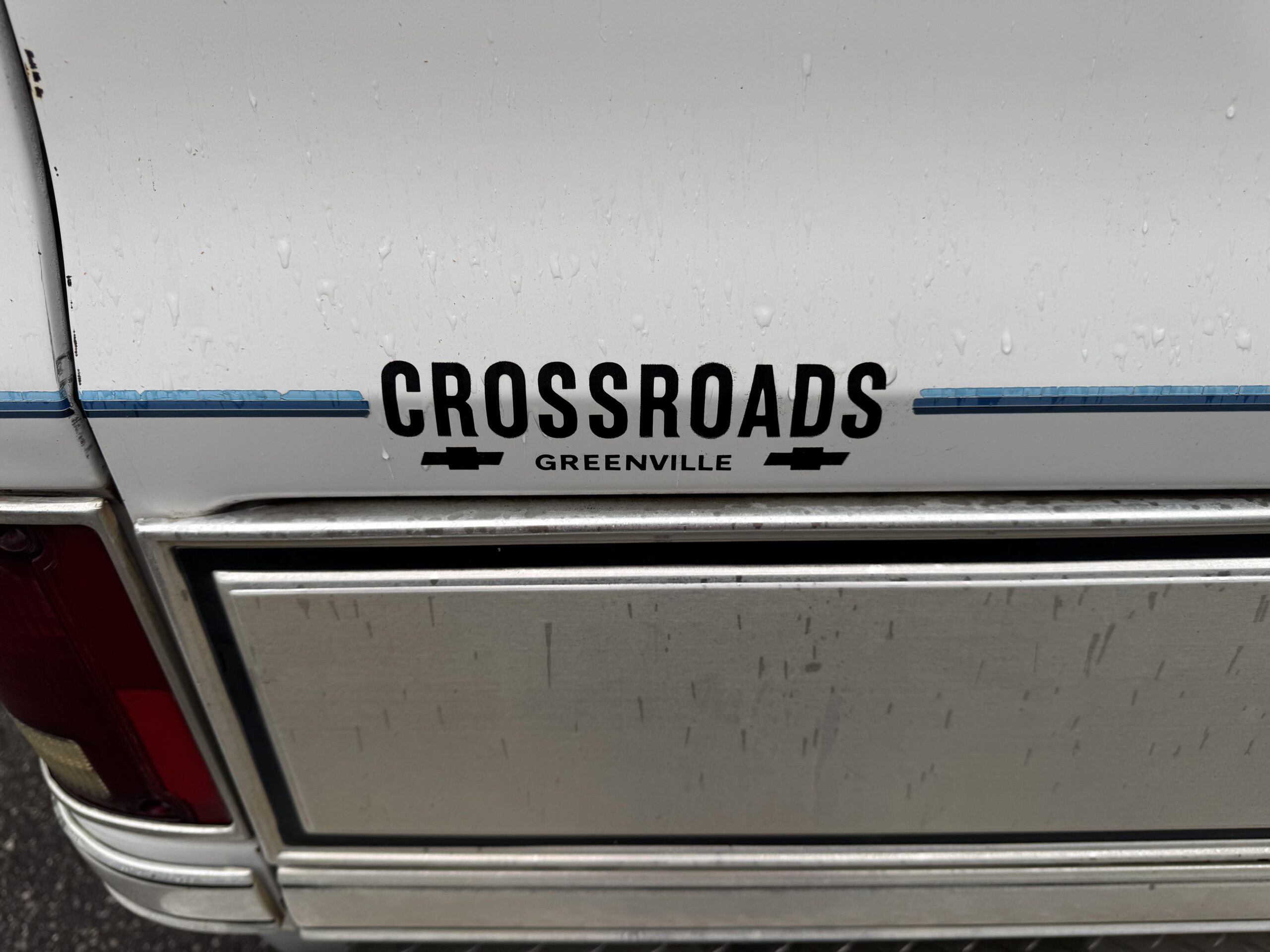
Does anyone know where this dealership might have been located in the Upstate of South Carolina back in the day?



